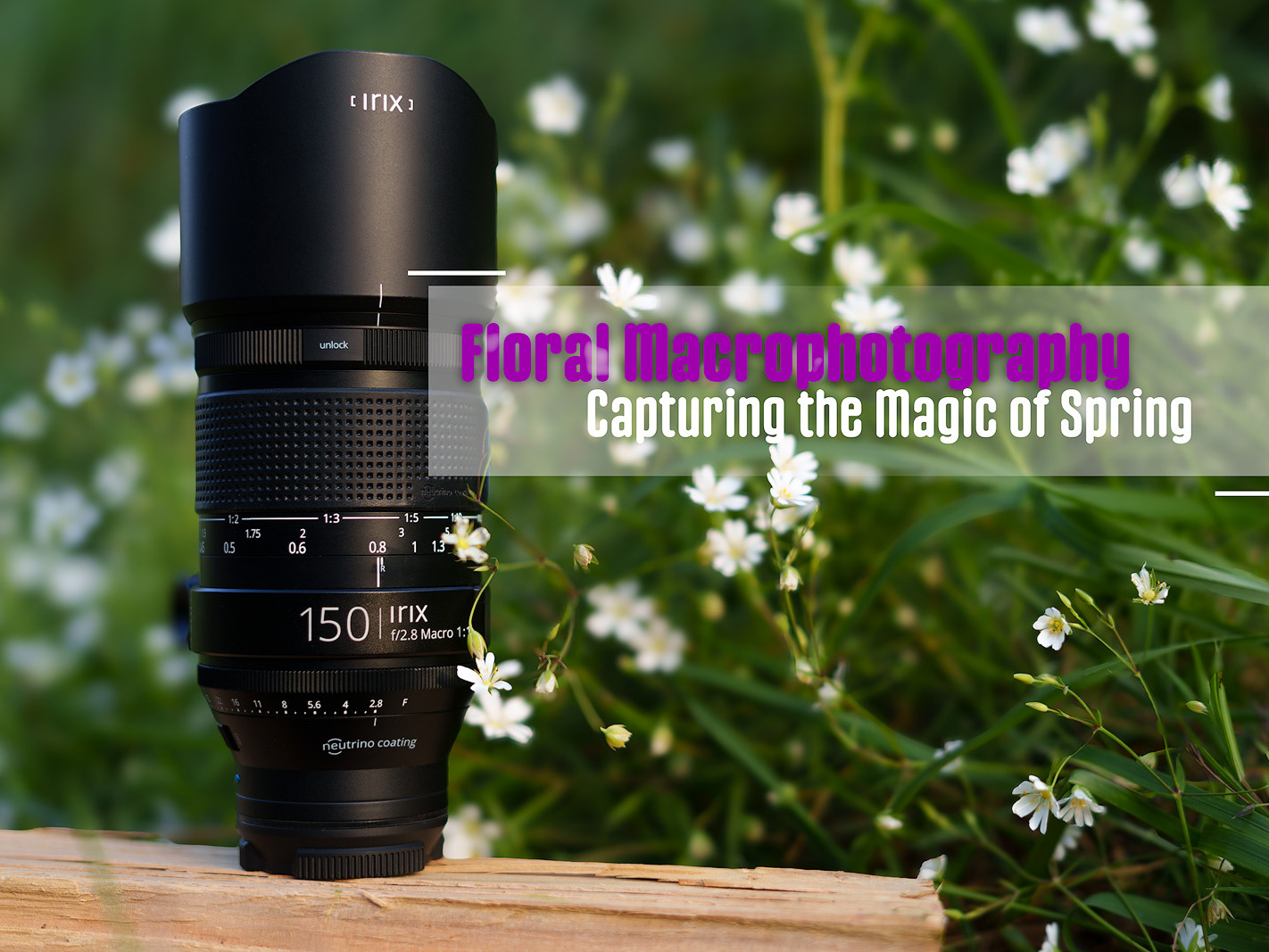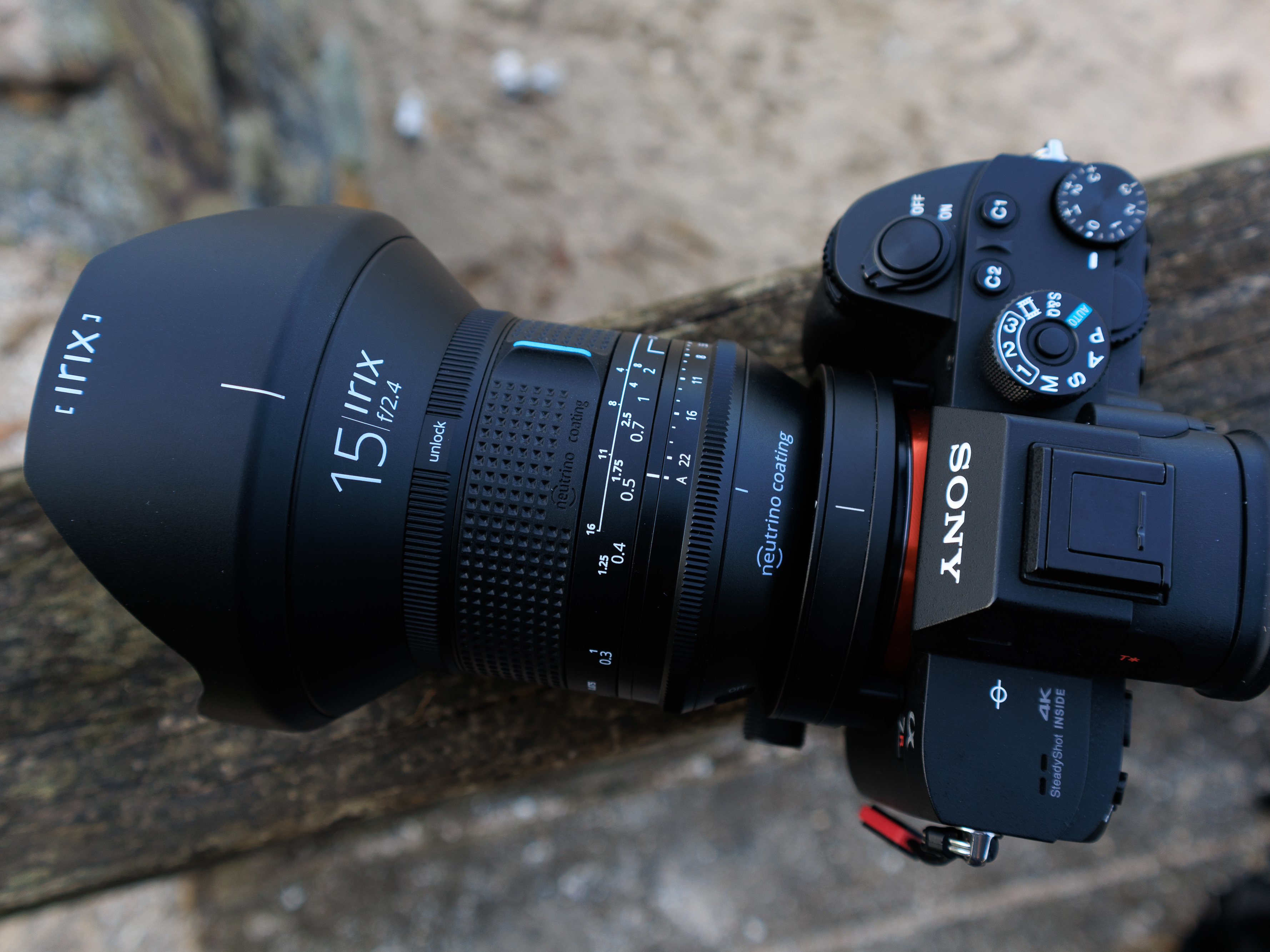We analyze in depth this lens created by the Irix brand, a full-format wide-angle lens with a viewing angle of 110º and designed for Full Frame cameras, with a construction of 15 elements in 11 groups and diaphragm blades with 9 rounded leaves , having an aperture ranging from F2.4 to F22. The minimum focusing distance is 0.28 m, it has low distortion and the lens is weather sealed.
This lens came out in 2 versions (Dragonfly and BlackStone), for Canon EF, Nikon F and Pentax K mounts, but for Sony E mount only the Dragonfly version is available, which differs from the BlackStone version in that the body of the latter It is constructed of Al/Mg and has UV reflective markings on the barrel.
Another very important fact to highlight is that, although it is a completely manual focus lens, it has an electronic connection chip with the camera, which implies that it is transmitting the exif data to our RAW files and that we have total control of the parameters that it uses. Let's use it from the camera itself. It is also good to note that the diaphragm ring has the option of being able to control it from the camera itself (placing it in position A, image 2) or directly from the ring itself, being able to choose and exchange it using a button if we want it to be done in steps of ⅓ with their respective clicks or without clicks (image 4).
Another point to highlight about this lens is that when it comes to focusing, IRIX has silk-screened the hyperfocal table on the focusing barrel, making it much easier for us and almost not having to look through the viewfinder when focusing on what we see. It will be very useful for night photographs. It also has an option so that, once we have the object in focus, we can lock it by turning a small ring (image 5), which is very useful on certain occasions, especially in night photography.
The IRIX 15mm f2.4 Dragonfly has a diameter of 95mm, which also implies that any type of filters of that same diameter can be screwed on it and the lens hood has included a window which we can open and from there control the polarizing filter ( CPL) if necessary.
The weight of this IRIX 15mm f2.4 Dragonfly lens is 662g.
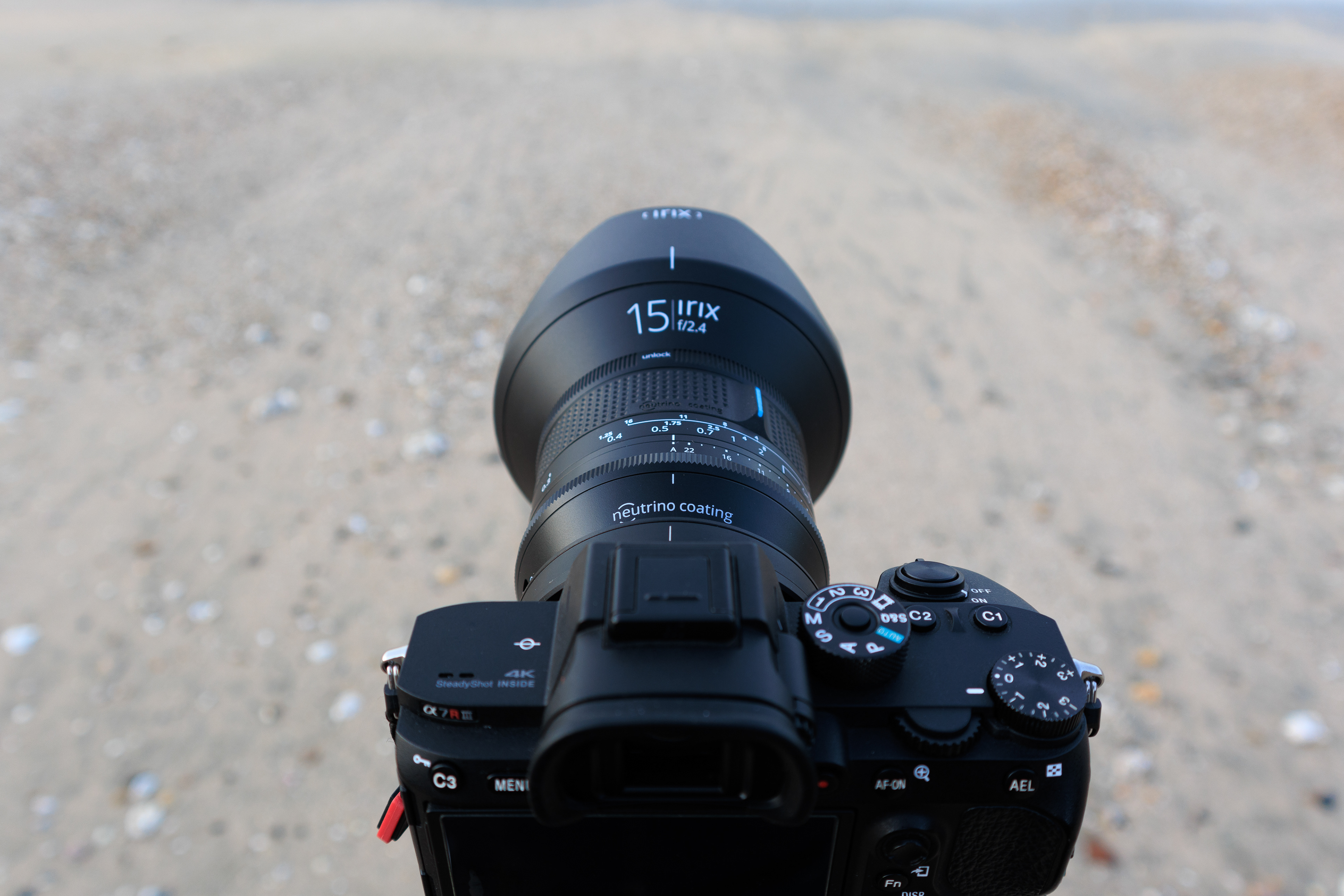
Position A for the diaphragm


“Click / Declick”
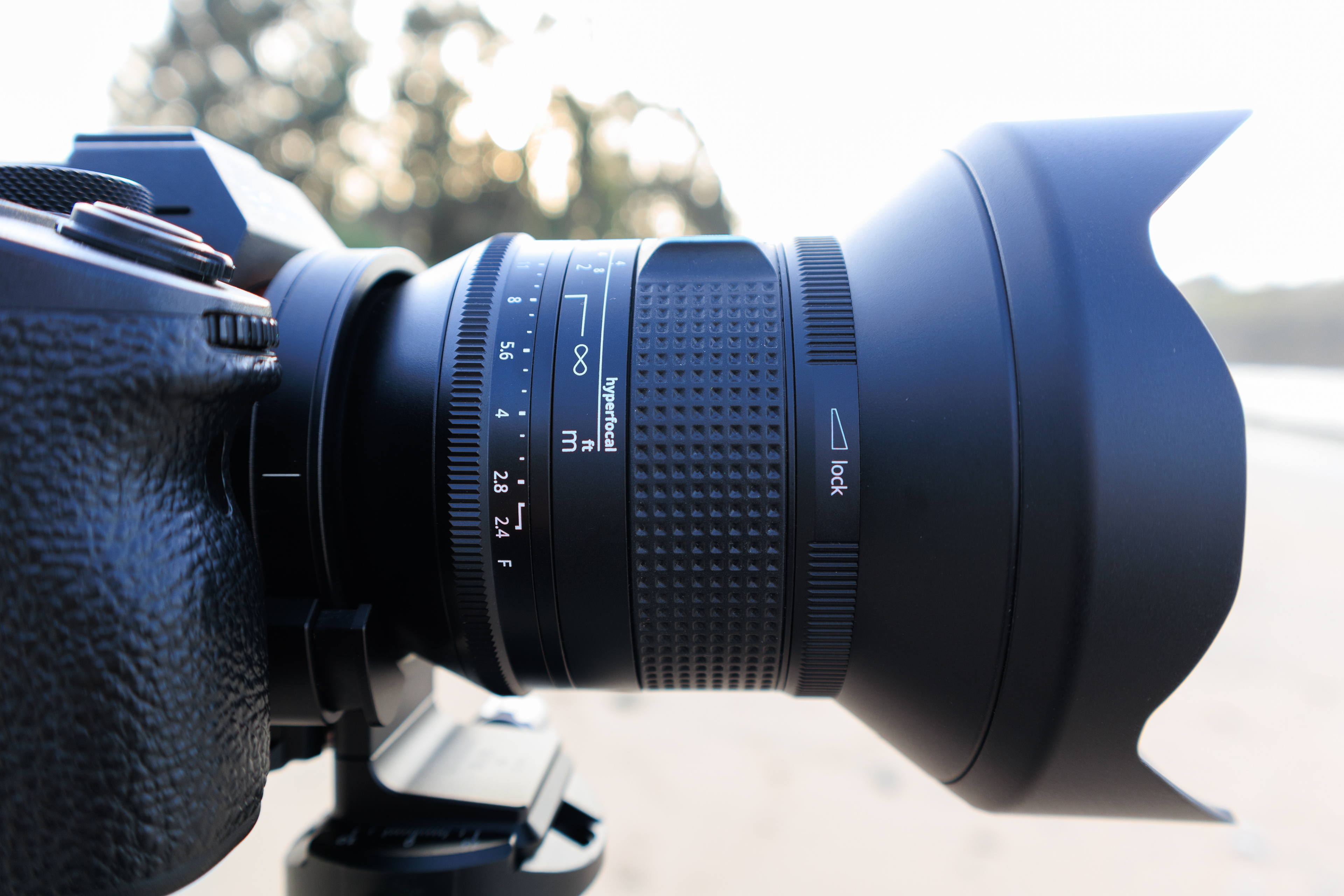
Labeled hyperfocal and locking/unlocking ring

Access to filters and lens calibration



Contacts to transmit the exif
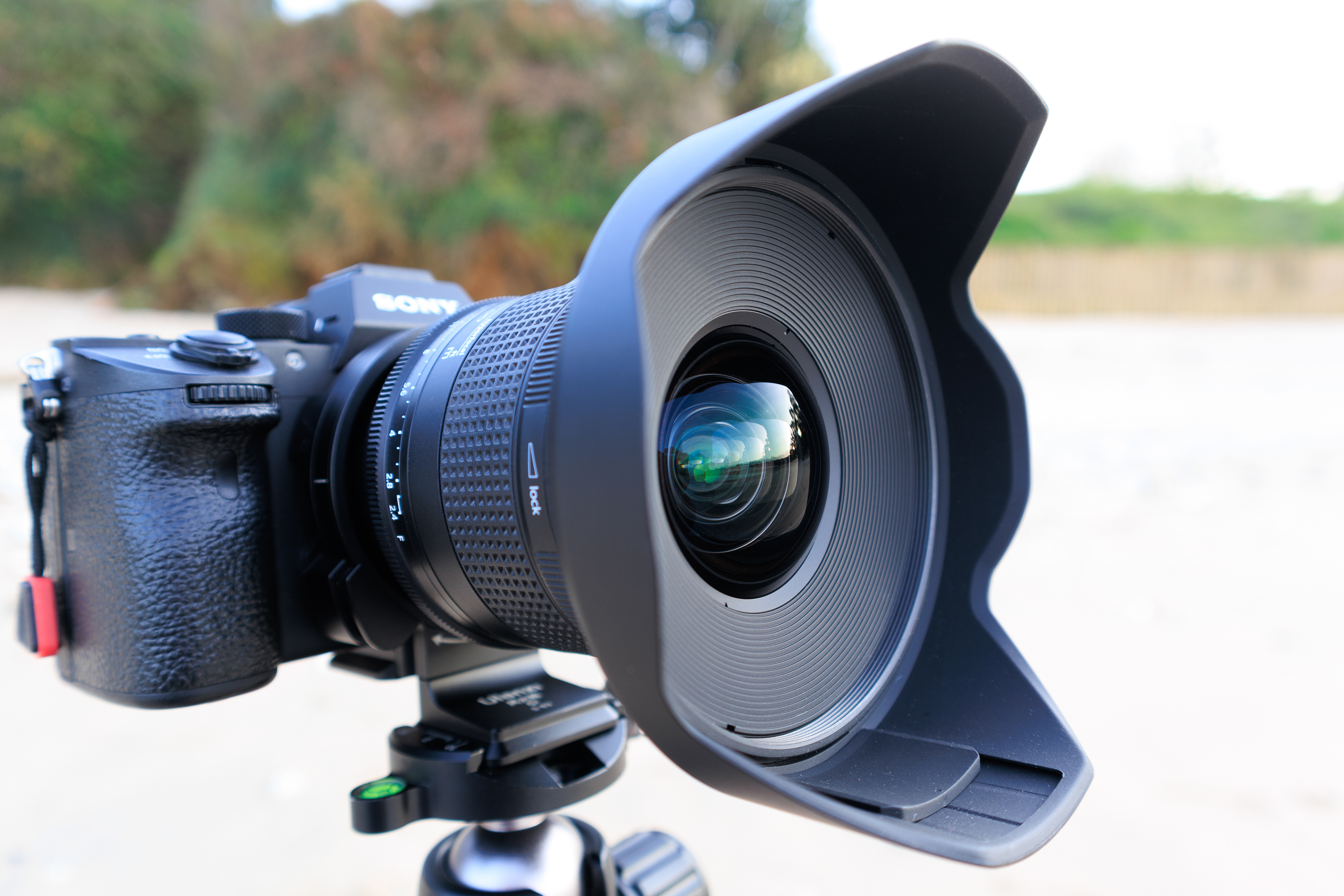
Diameter 95mm
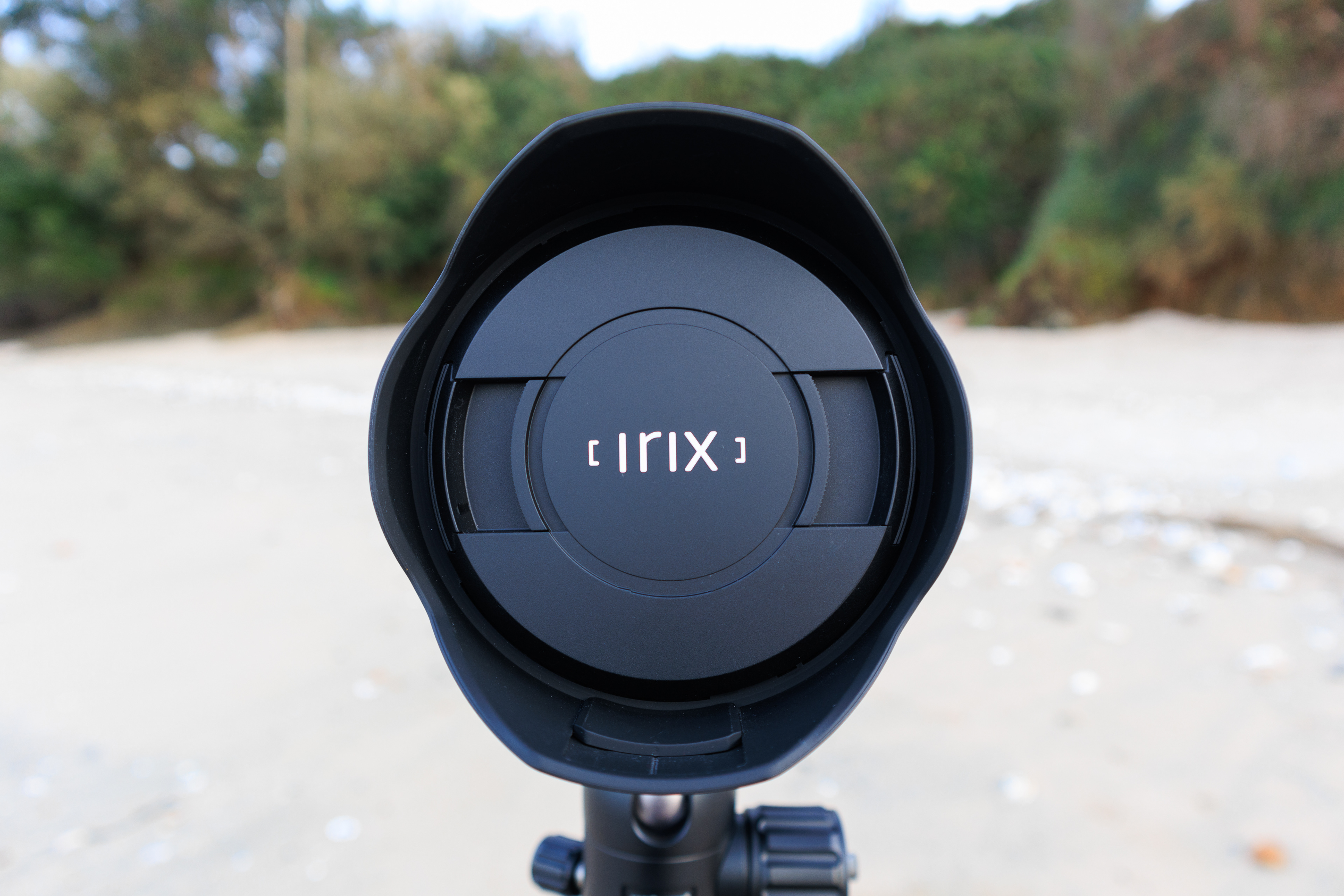
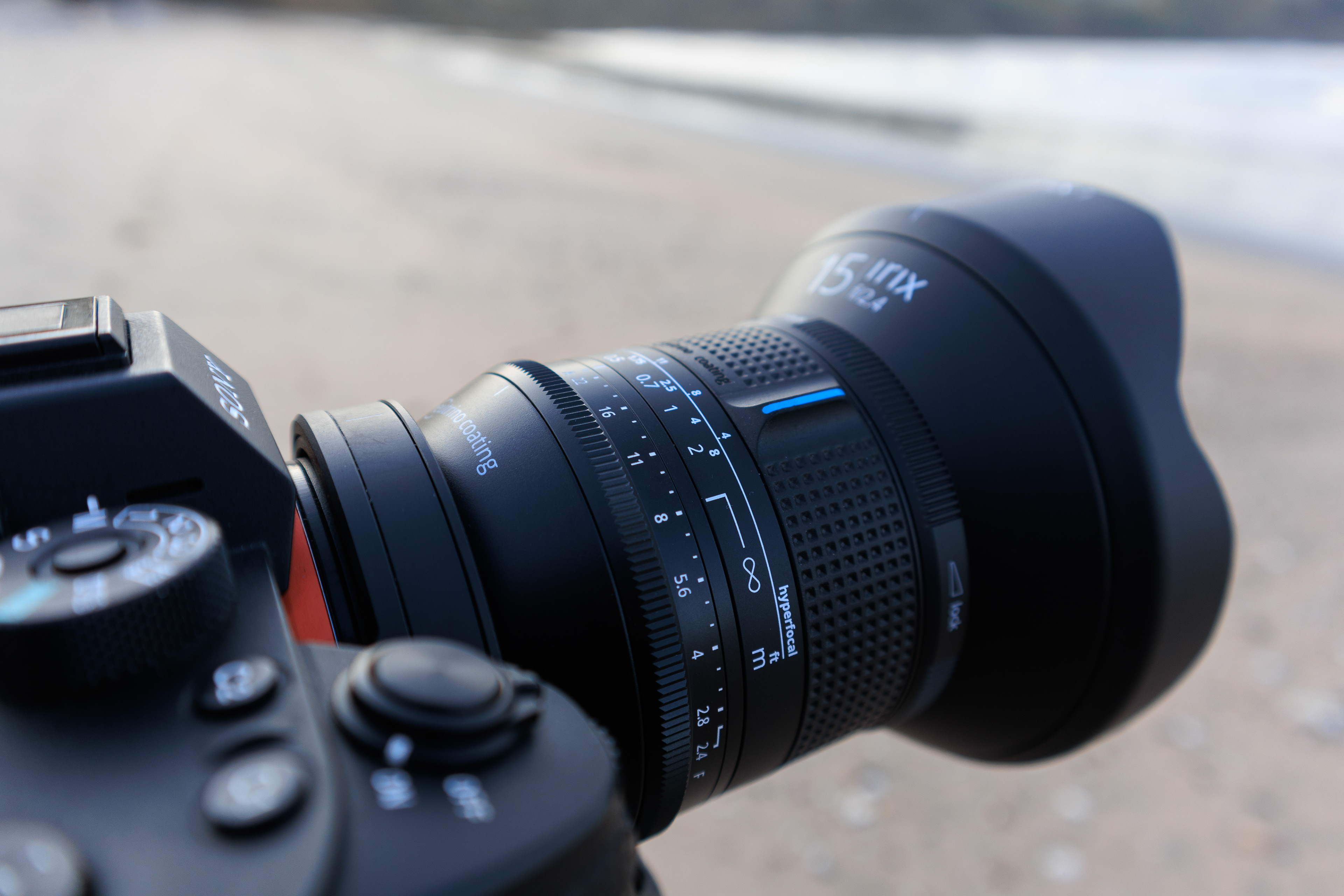

SHARPNESS
For testing the sharpness of this lens, I have taken the same photograph by placing the camera on a tripod and shooting at different f numbers: 2.4 - 2.8 - 4 - 5.6 - 8 - 11- 16 and 22.
Analyzing the images we can see that at f2.4 the IRIX 15mm has very good sharpness in the center of the image but is somewhat soft in the corners. If we close one stop, to f4, we begin to notice a considerable increase in sharpness both in the center and in the corners although, according to my analysis, the sweet spot of this lens and therefore the greatest sharpness both in the center and in the corners, or at least in the unit that IRIX has lent me, it would be between f5.6 and f8, however I would lean more toward f8.
If we continue closing the aperture to f11, the sharpness drops a little in the center of the image and especially in the corners, but it is still more than acceptable and we could use that aperture if necessary for some type of reason and without losing much sharpness.
We continue closing the diaphragm to f16, and there we can already see how the sharpness declines quite a bit both in the center and in the corners, something totally normal at those f and both in this and any other lens, due to the effect of diffraction.
And if we close to f22, which would be the smallest aperture that this lens has, the loss of sharpness throughout the image is considerable and the diffraction becomes totally evident, so it is not advisable to ever use apertures above f16 if you wish to obtain good sharpness in your images.
Below we can see the images that I used to perform the sharpness test.
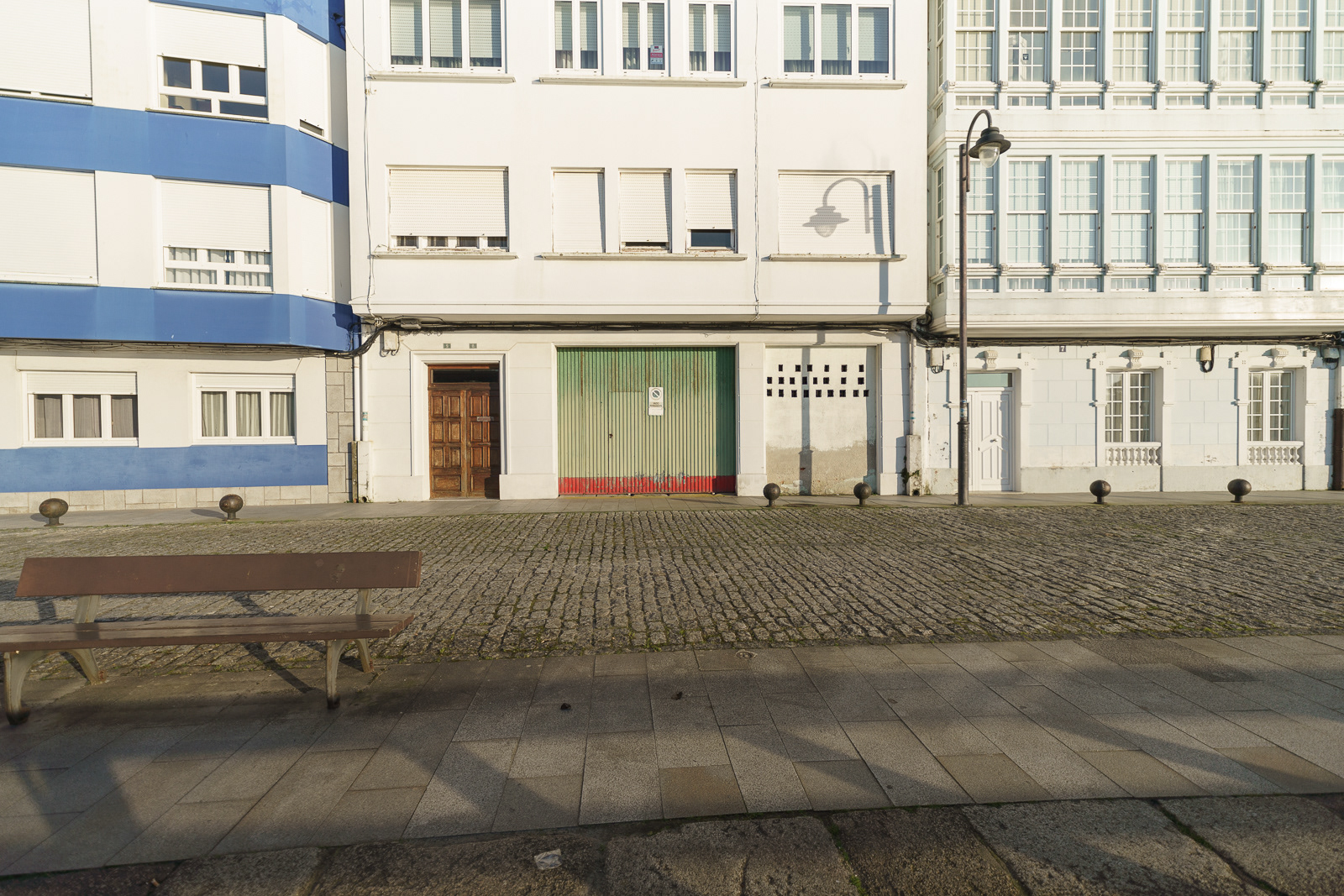
f2.4

f2.8
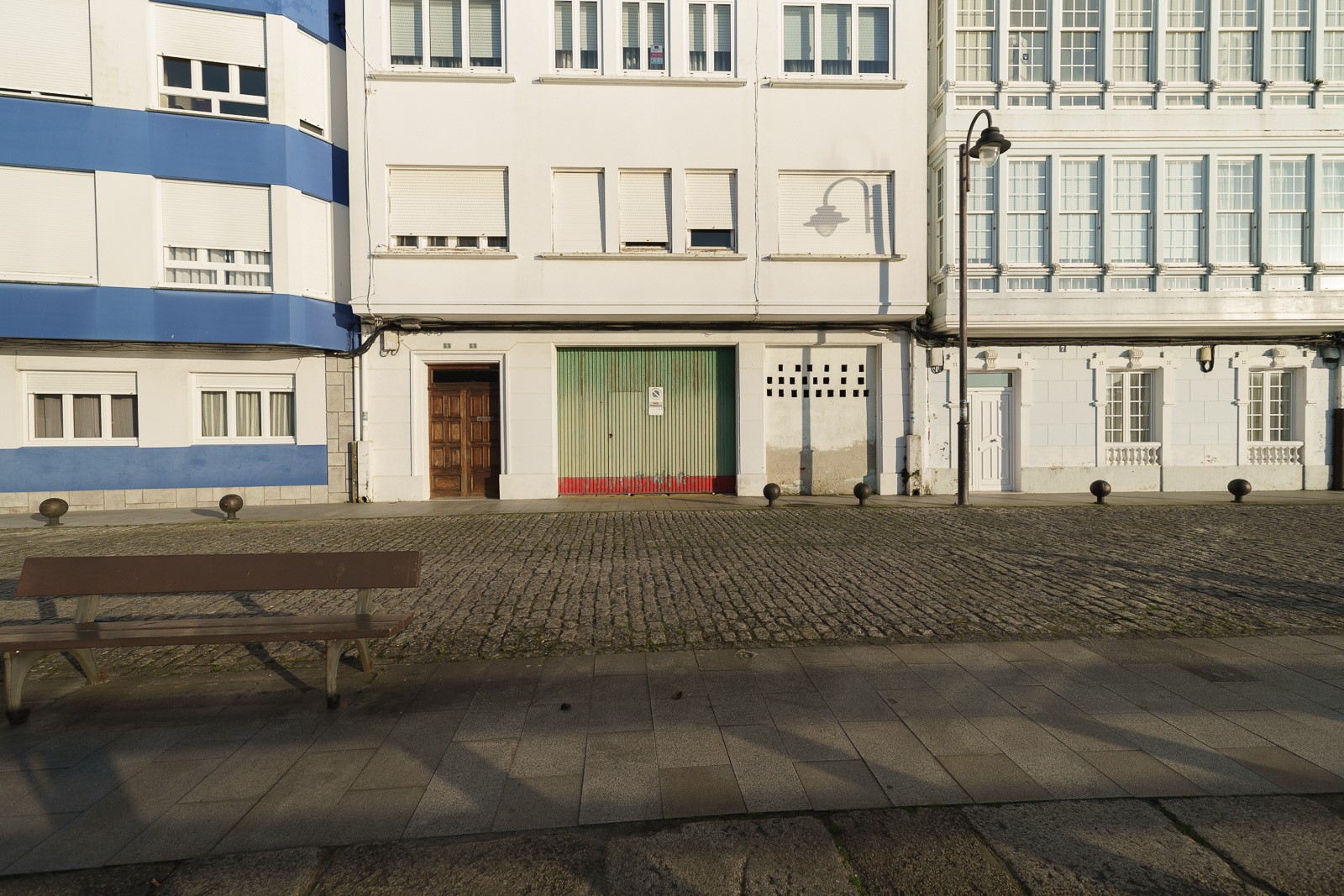
f4

f5.6

f8

f11

f16
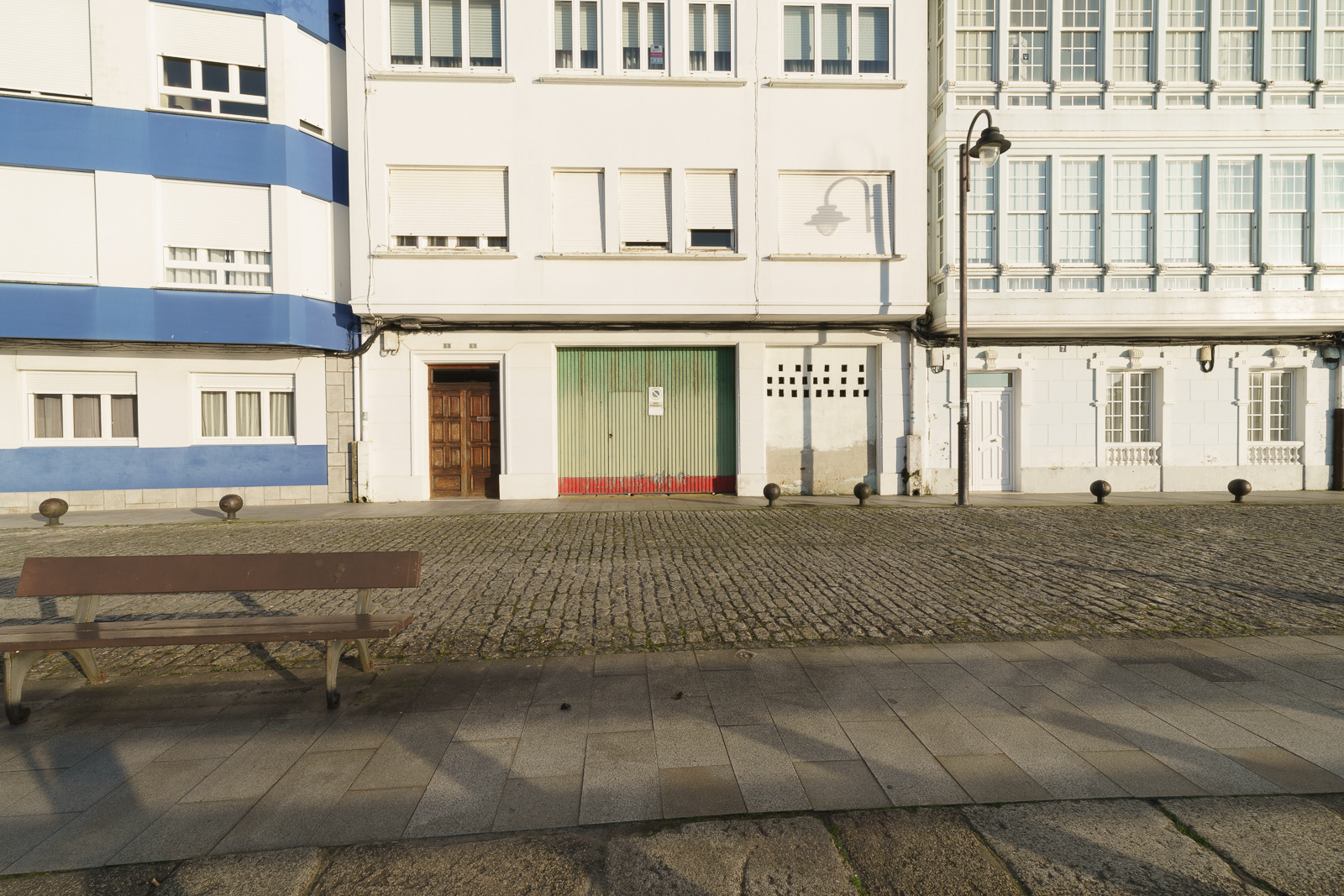
f22
And here we can see the sharpness of the lens in the center of the image at the different apertures. By clicking on the images we can see the differences that I mentioned in the analysis.

f2.4
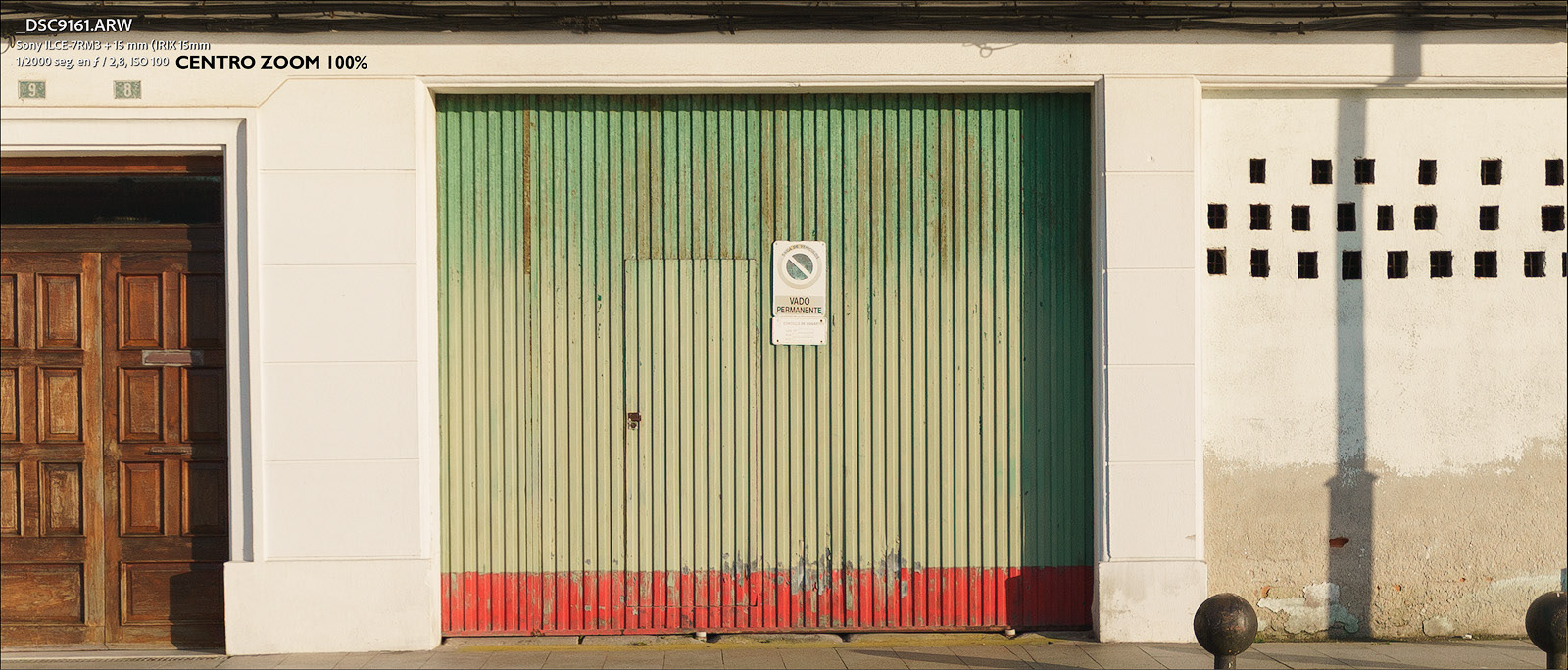
f2.8
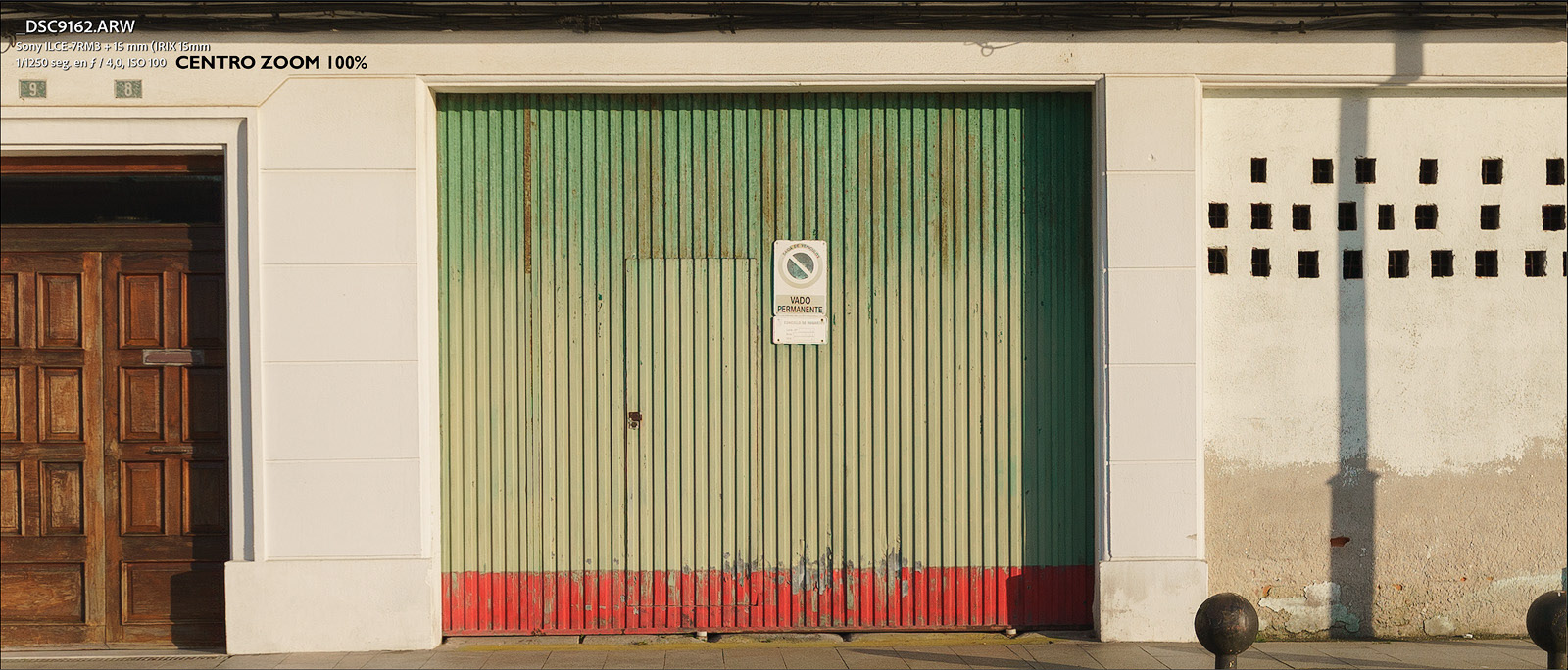
f4
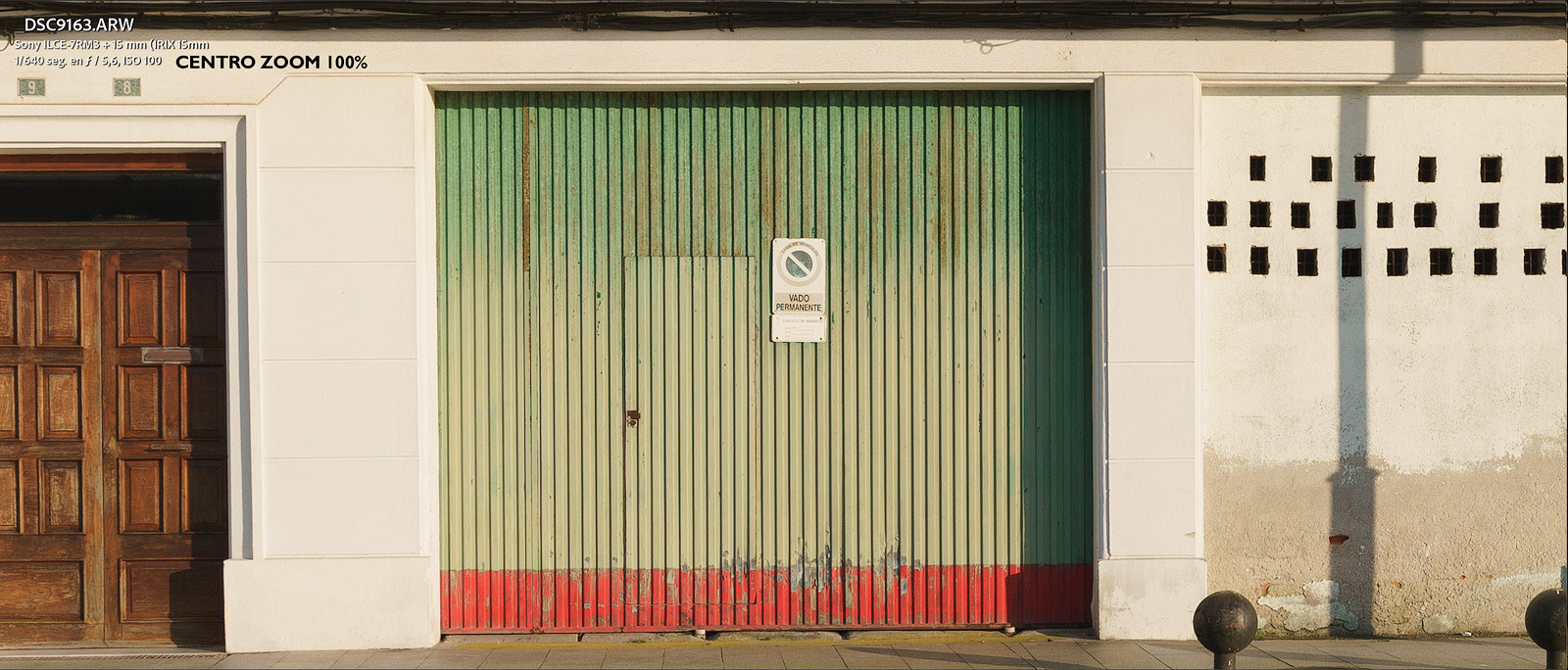
f5.6
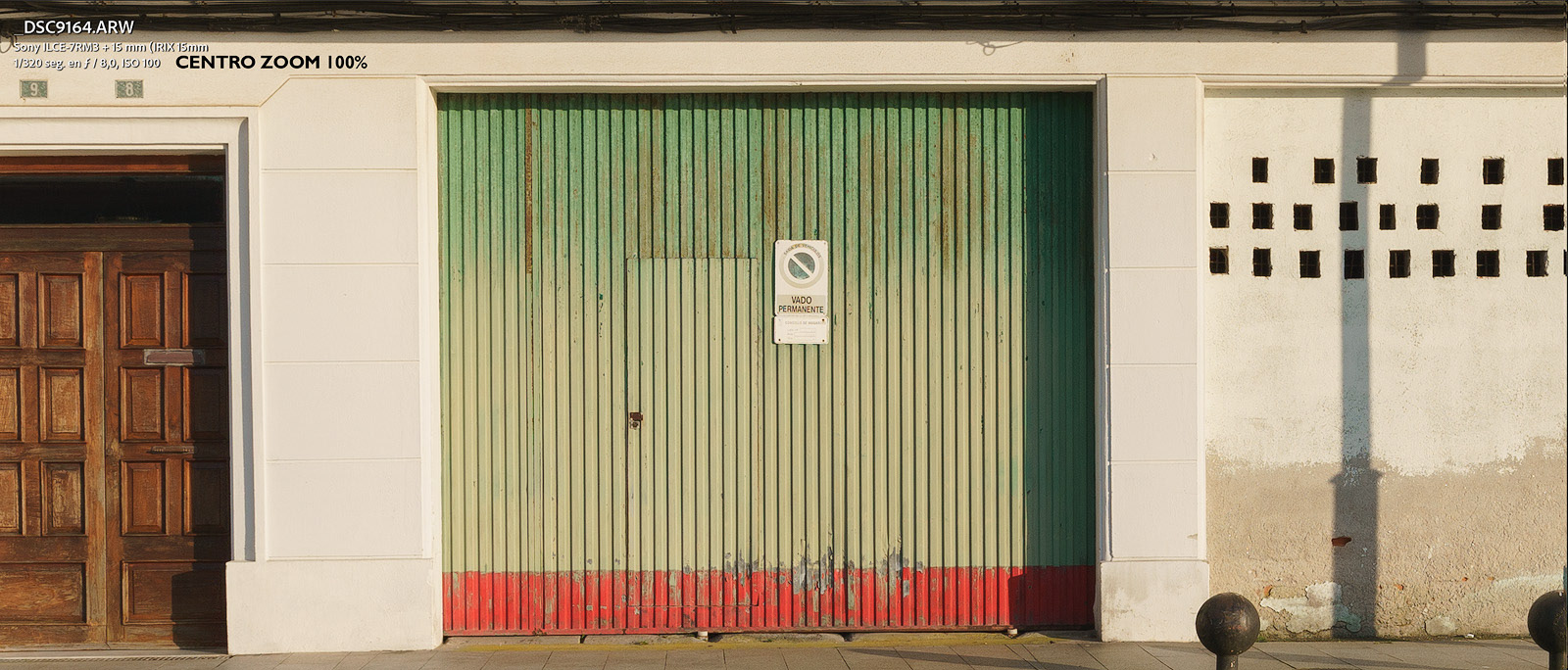
f8
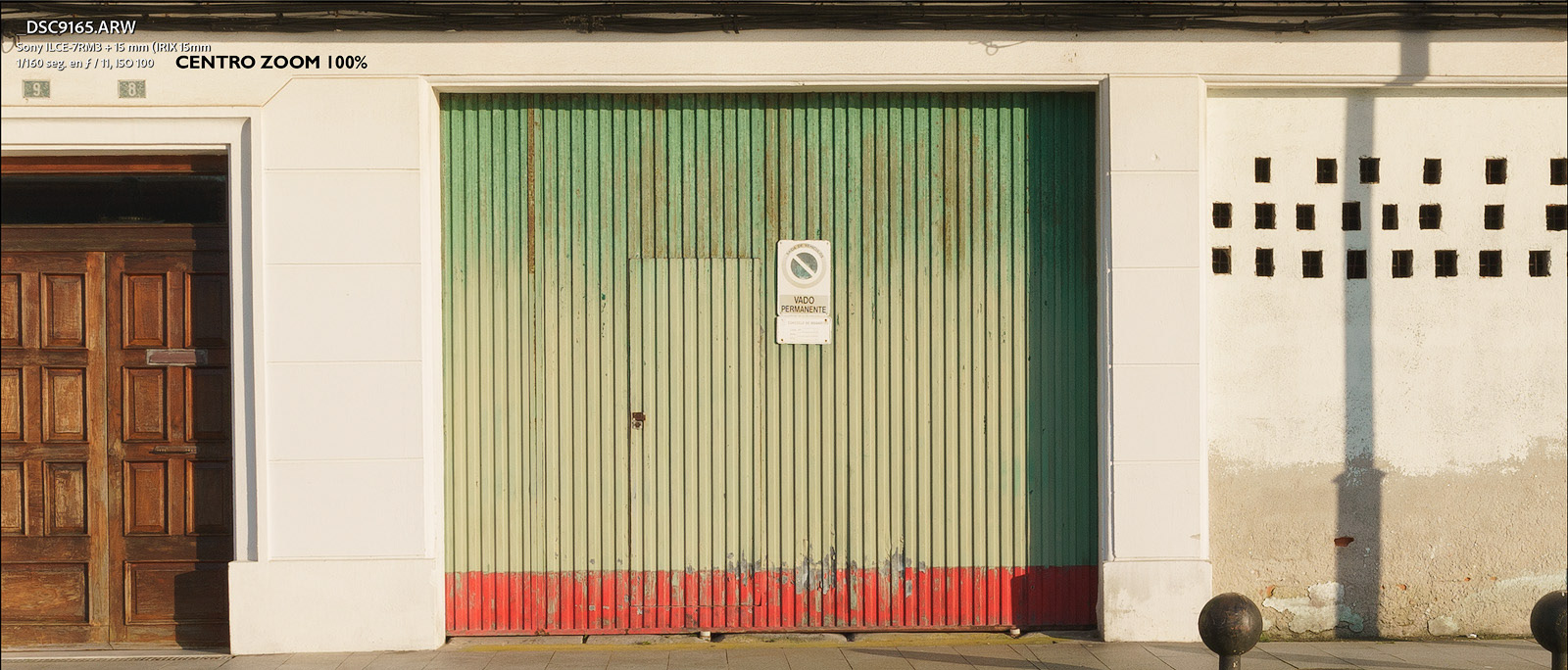
f11
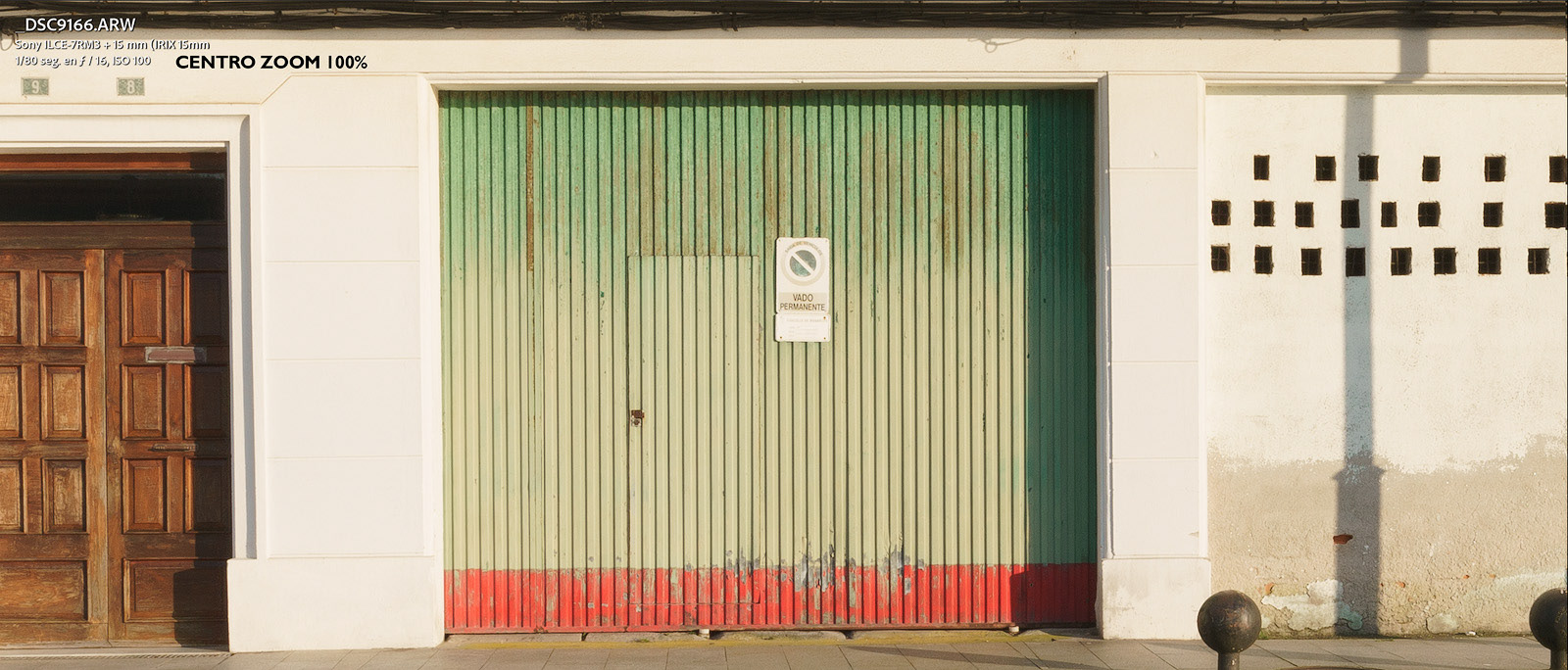
f16

f22
Sharpness in the corners, the examples are from the top right corner of the image and my conclusion is that the sweet spot of this lens is definitely at f8 where the sharpness is perfect.
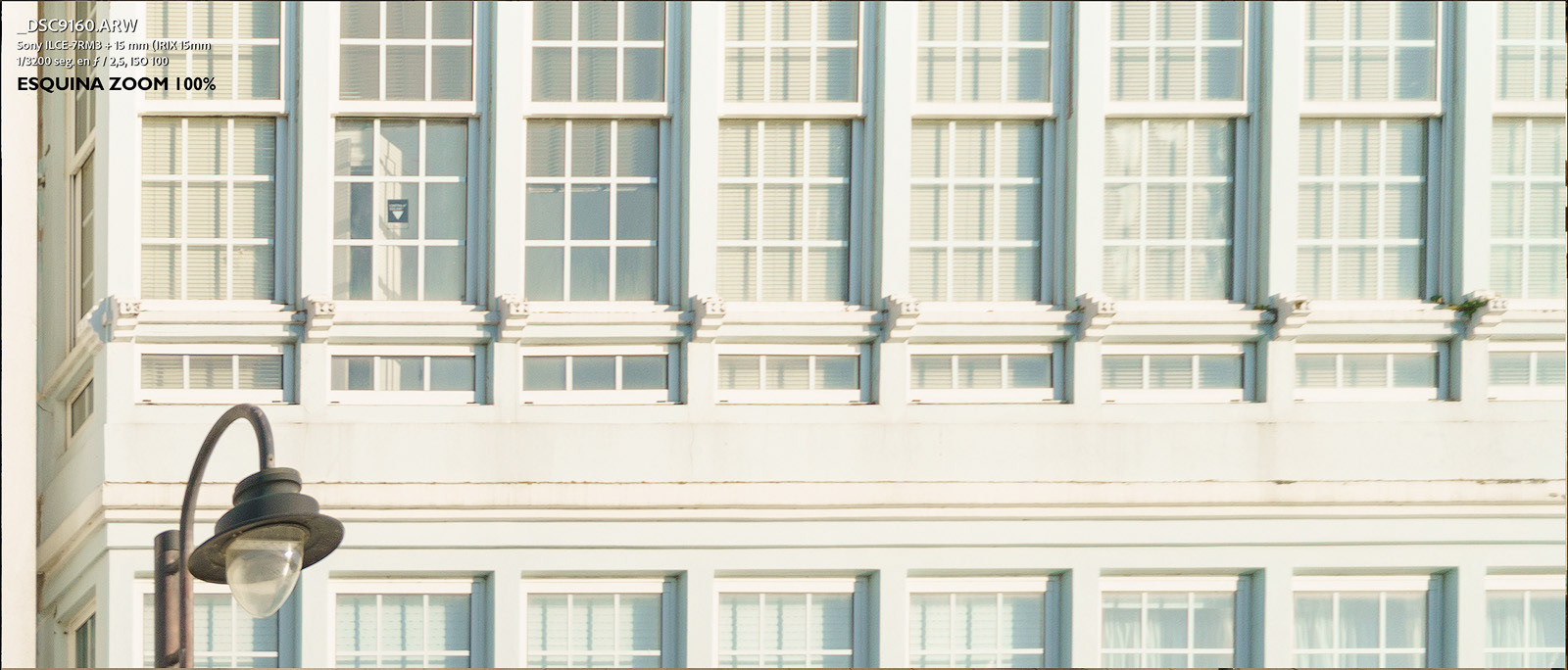
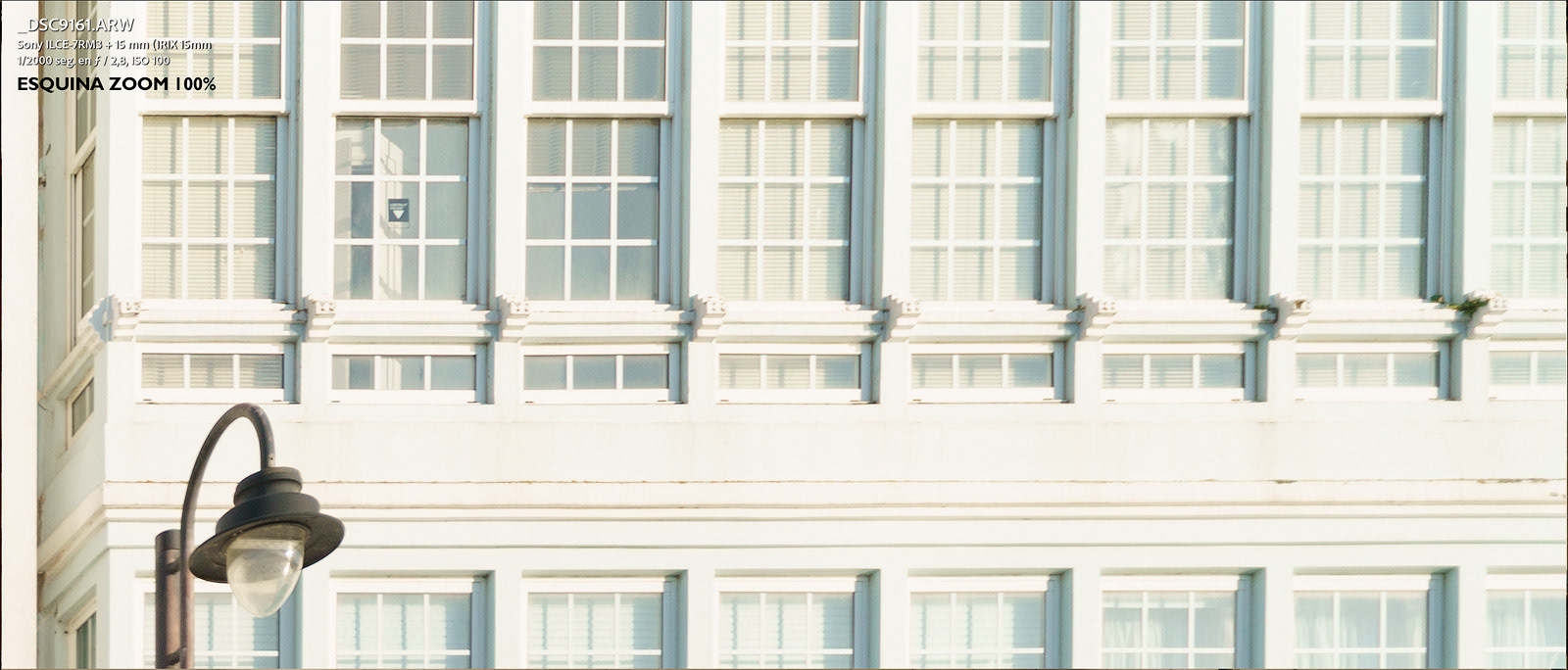
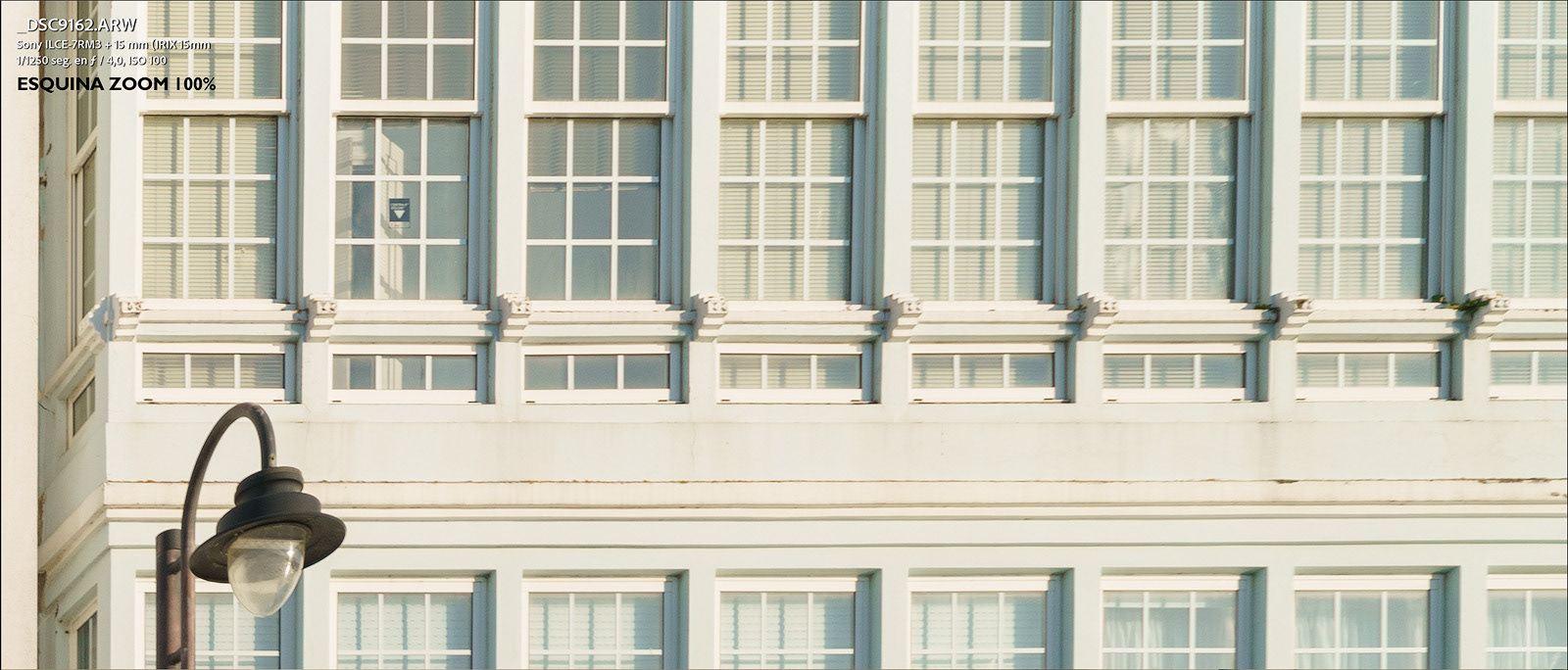
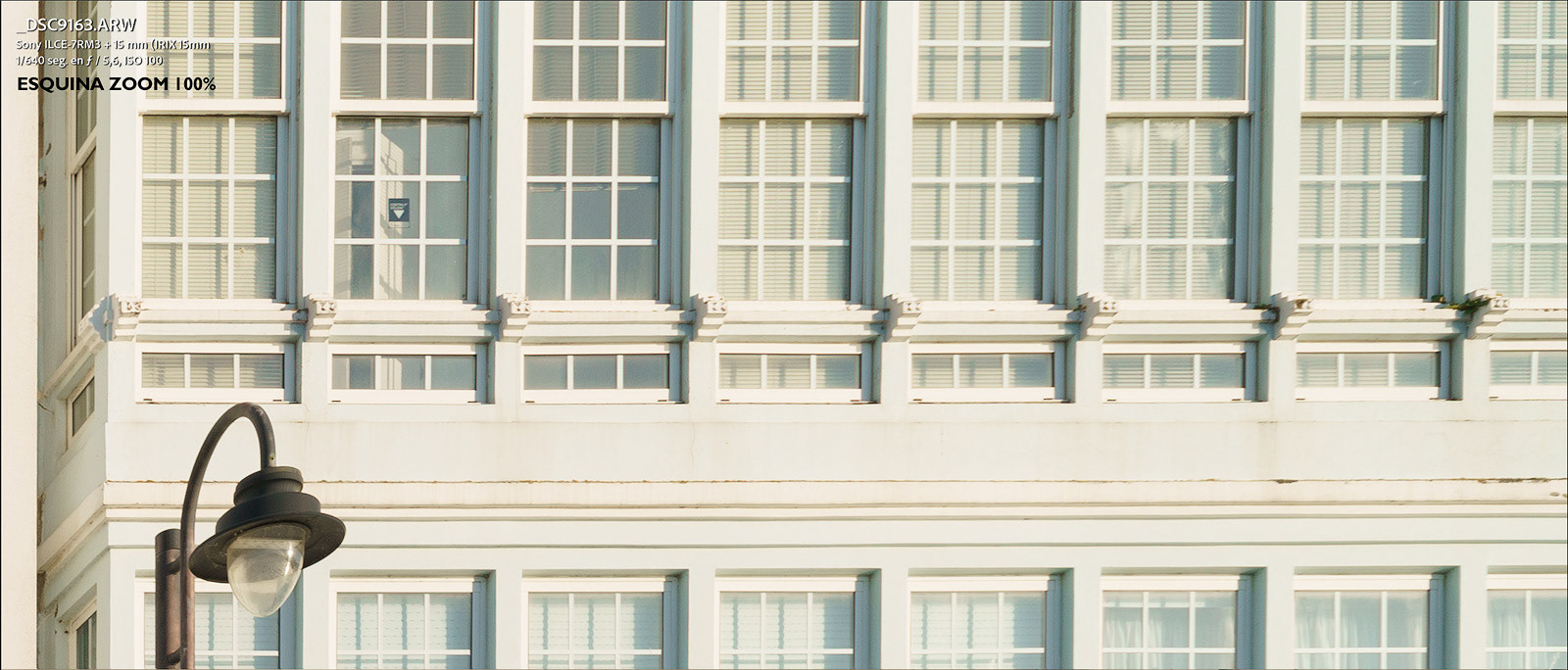
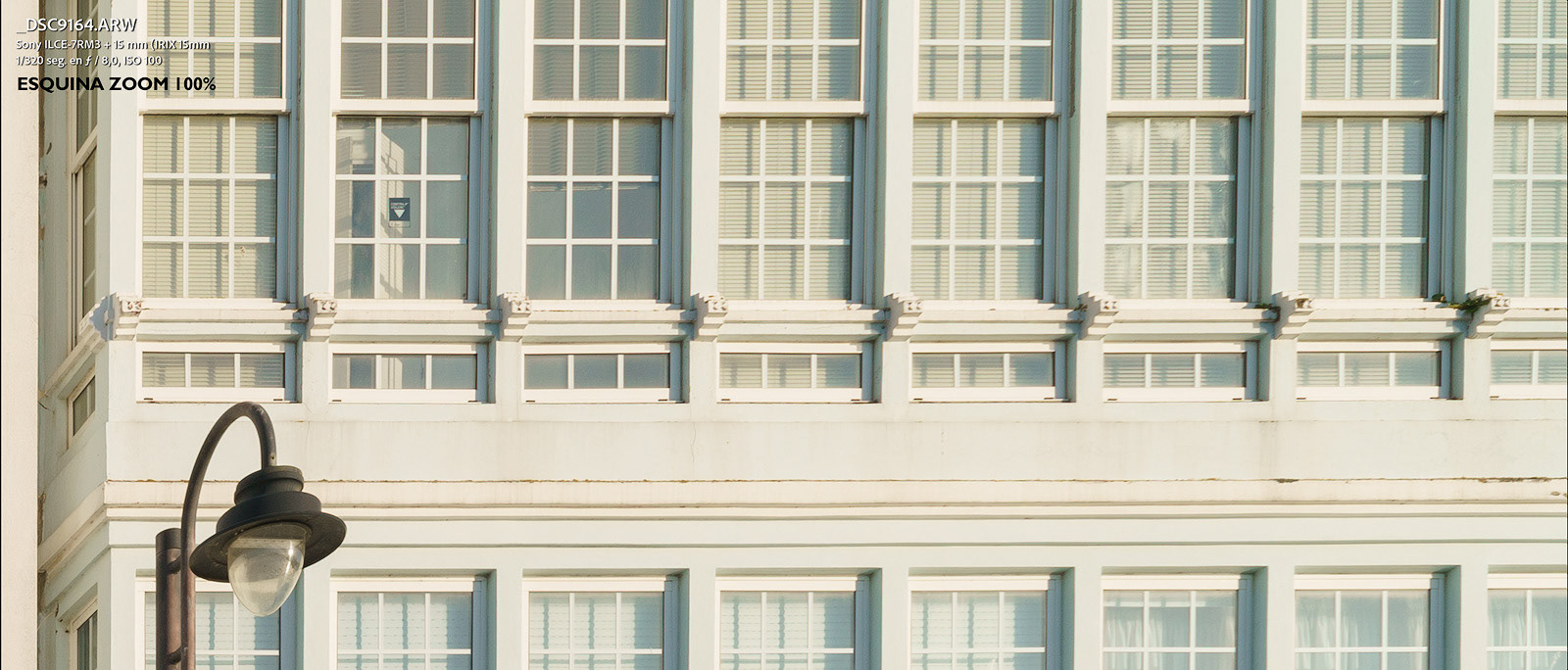
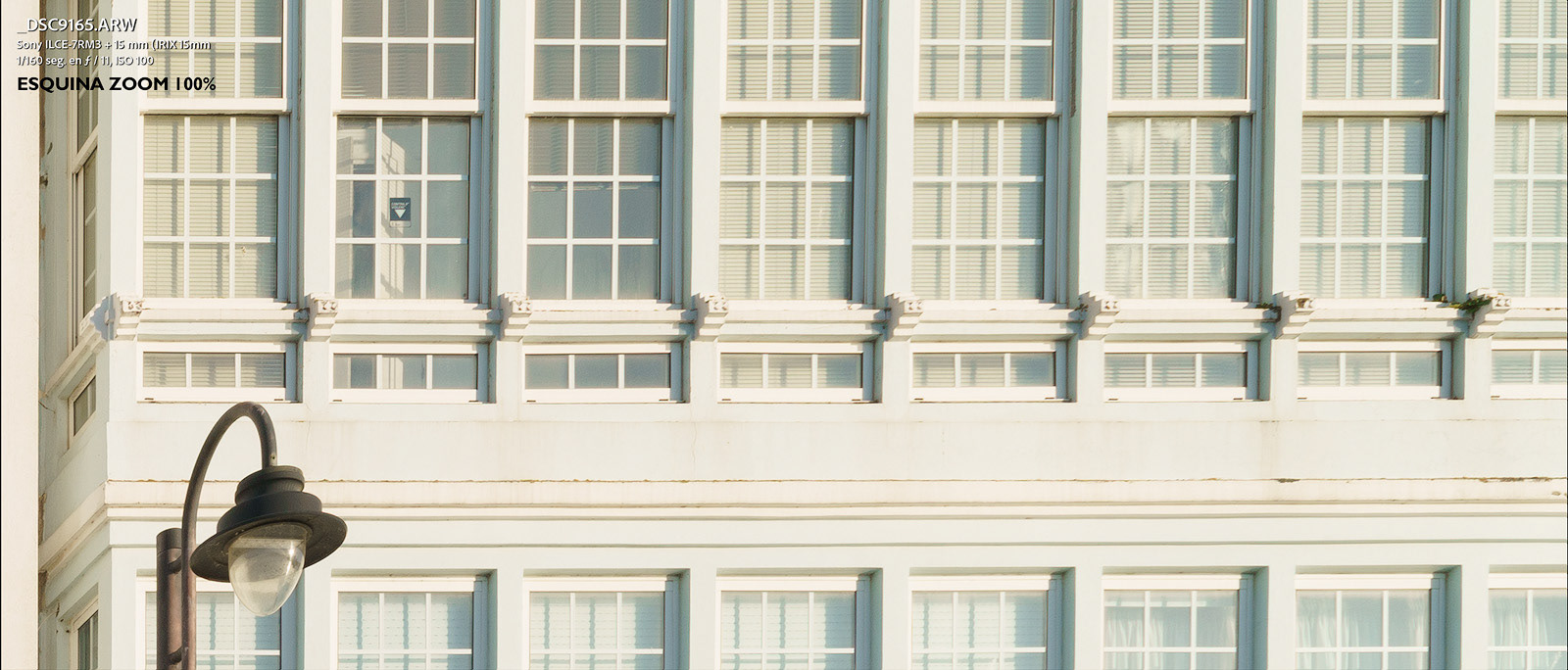

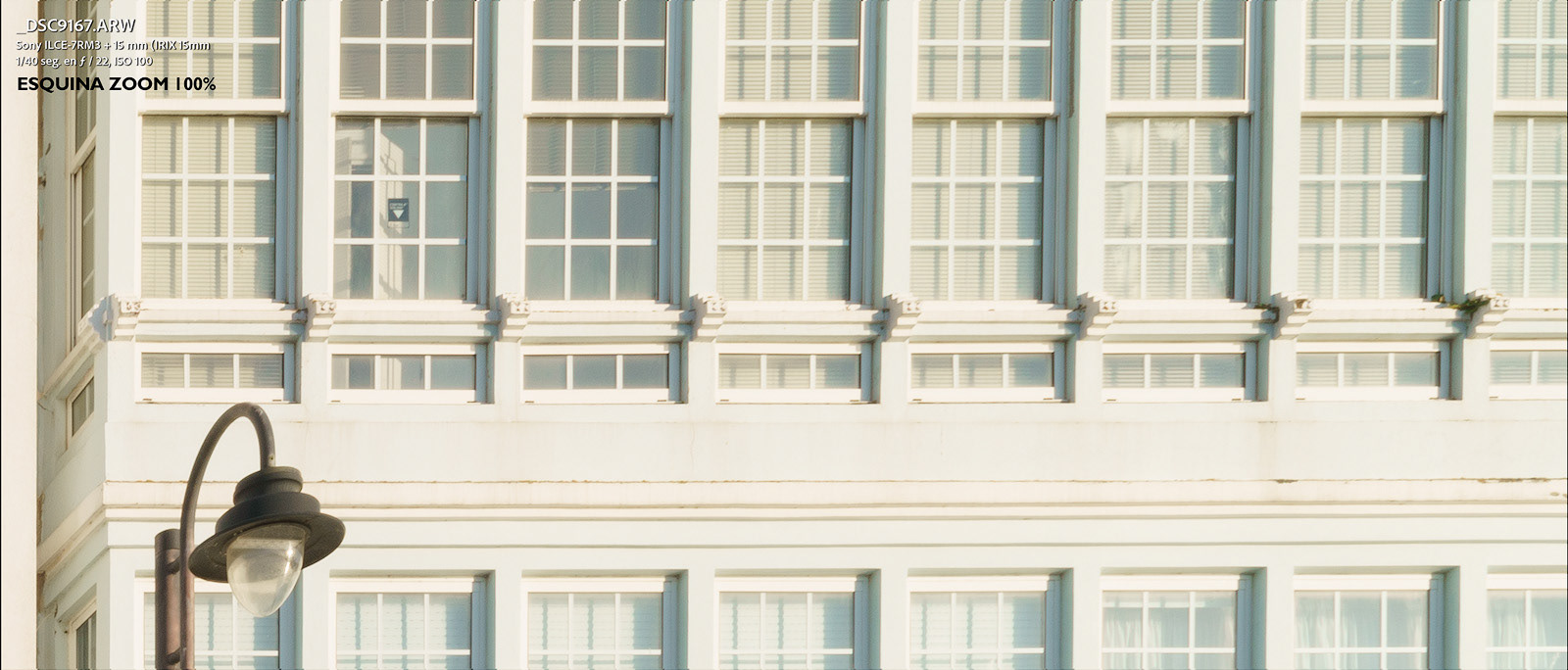
DISTORTION
We can affirm, after the tests carried out, that the Irix 15mm f2.4 lens has a slight barrel distortion. For such an angular lens, the designers of this lens have managed to fantastically control its distortion, being able to confirm that what the brand promises with this lens in terms of low distortion is true. And it should also be noted that this slight distortion is corrected without problems in A. Lightroom or in any other development software that has the profile of this IRIX lens and applying said profile.
Now let's look at the tests carried out:
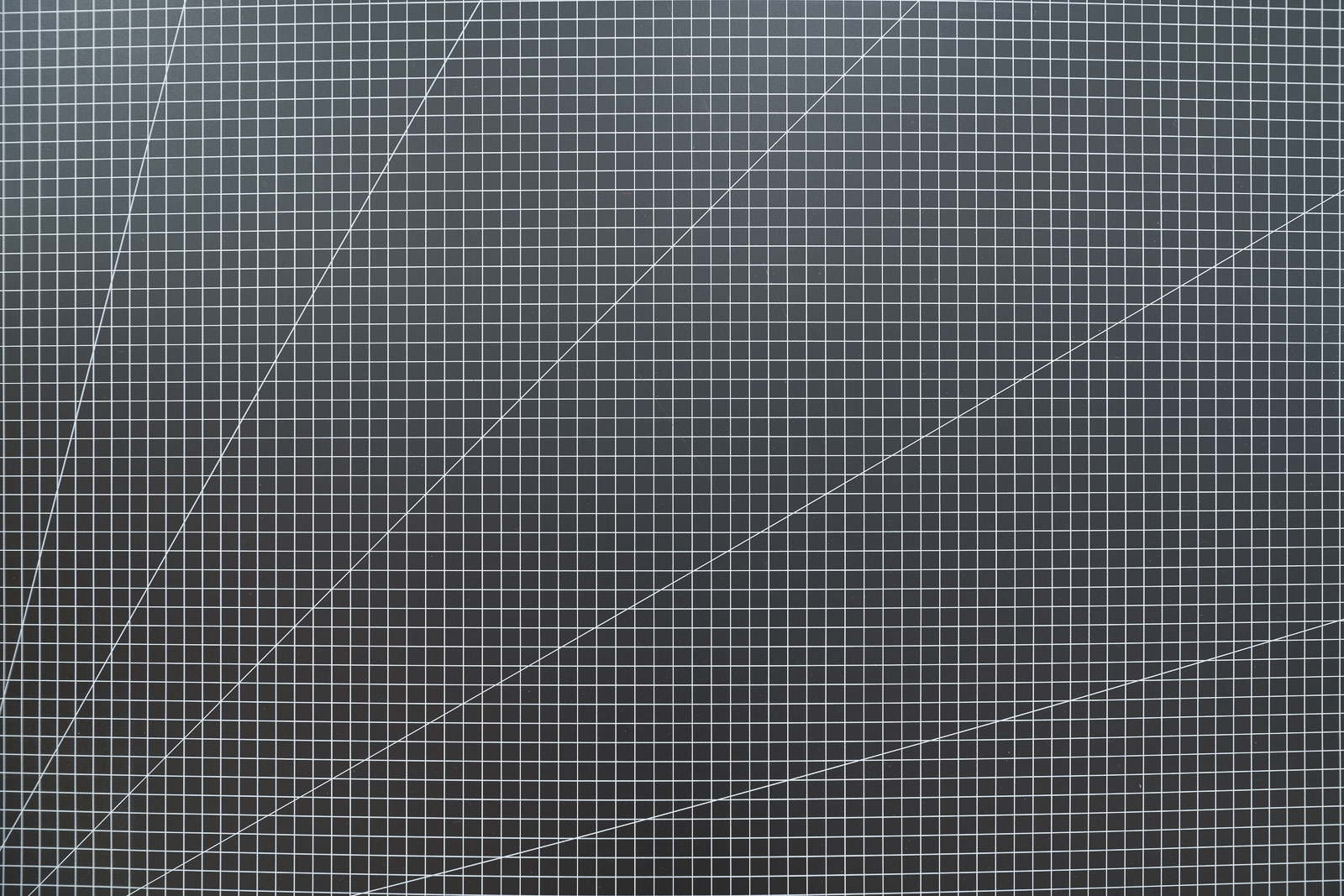
Distortion without applying lens profile (f8)

Distortion once applied lens profile (f8)
VIGNETTING AND CHROMATIC ABERRATIONS
To test the vignetting of this lens I have taken the same photograph of a white wall with uniform natural light on a cloudy day, using the apertures with the corresponding f (full stops): 2.4, 2.8, 4, 5.6, 8, 11,16 and 22. It should be noted that the photos shown below do not have any type of lens correction and have been exported as such to make this comparison.

No profile correction
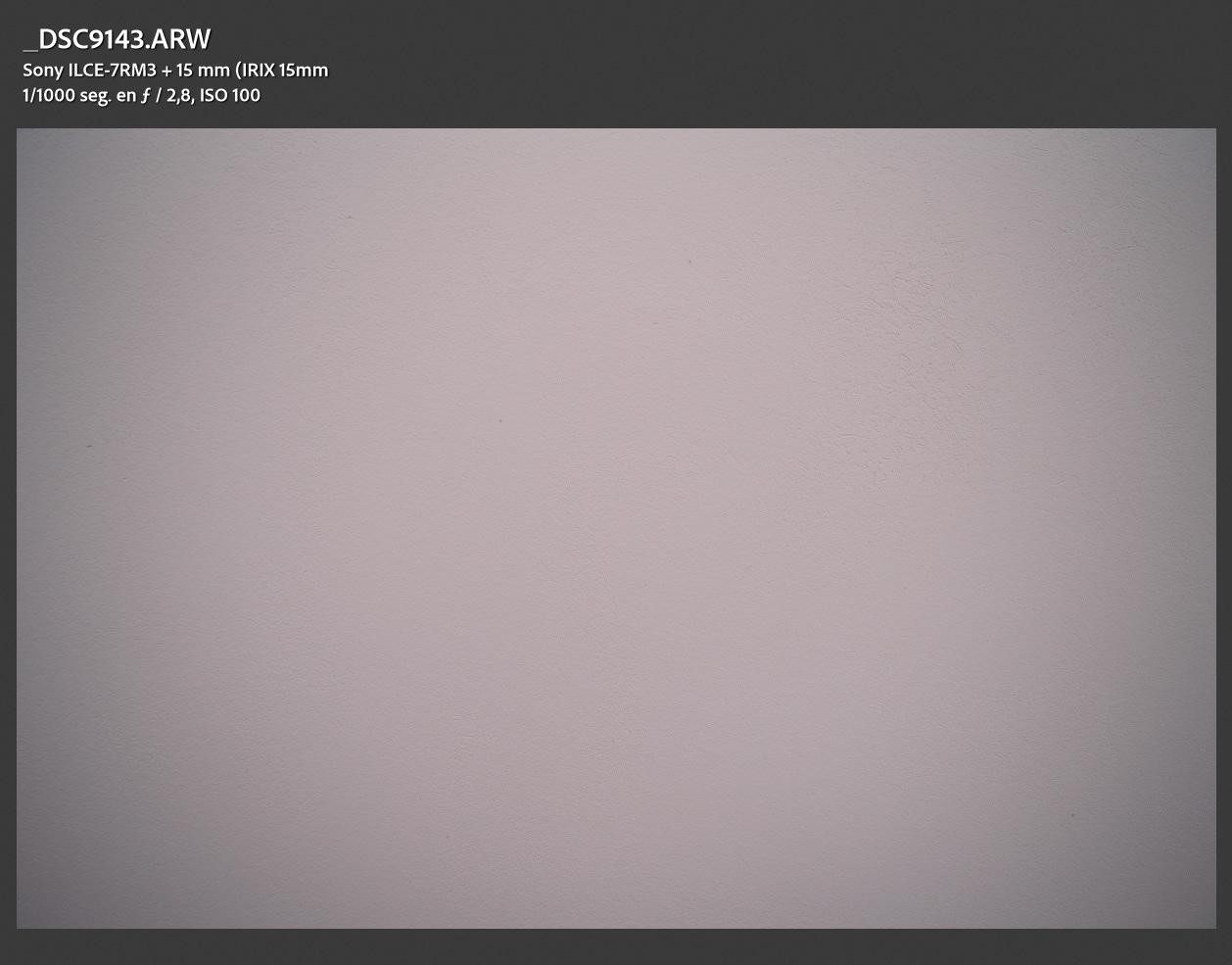
No profile correction

No profile correction
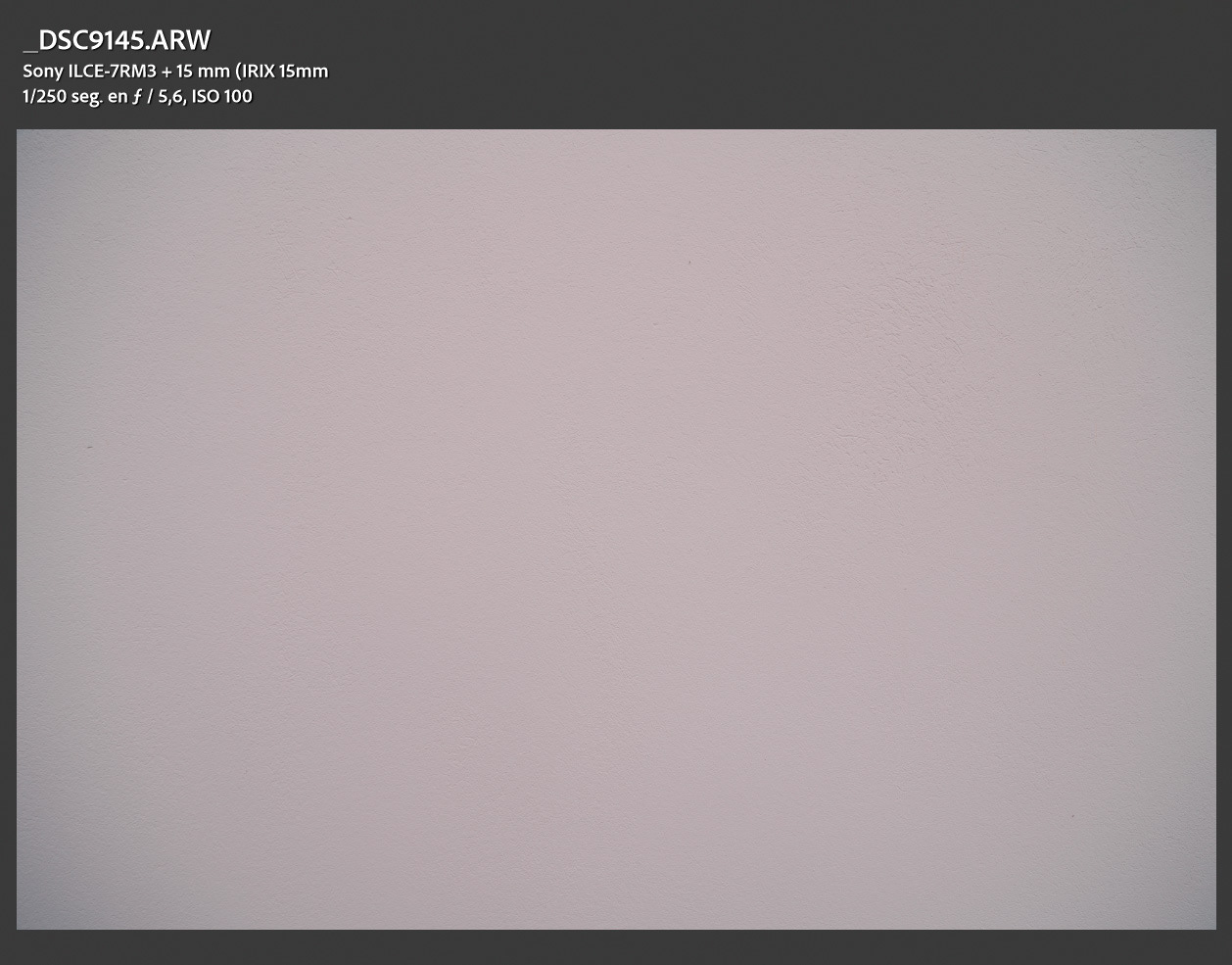
No profile correction
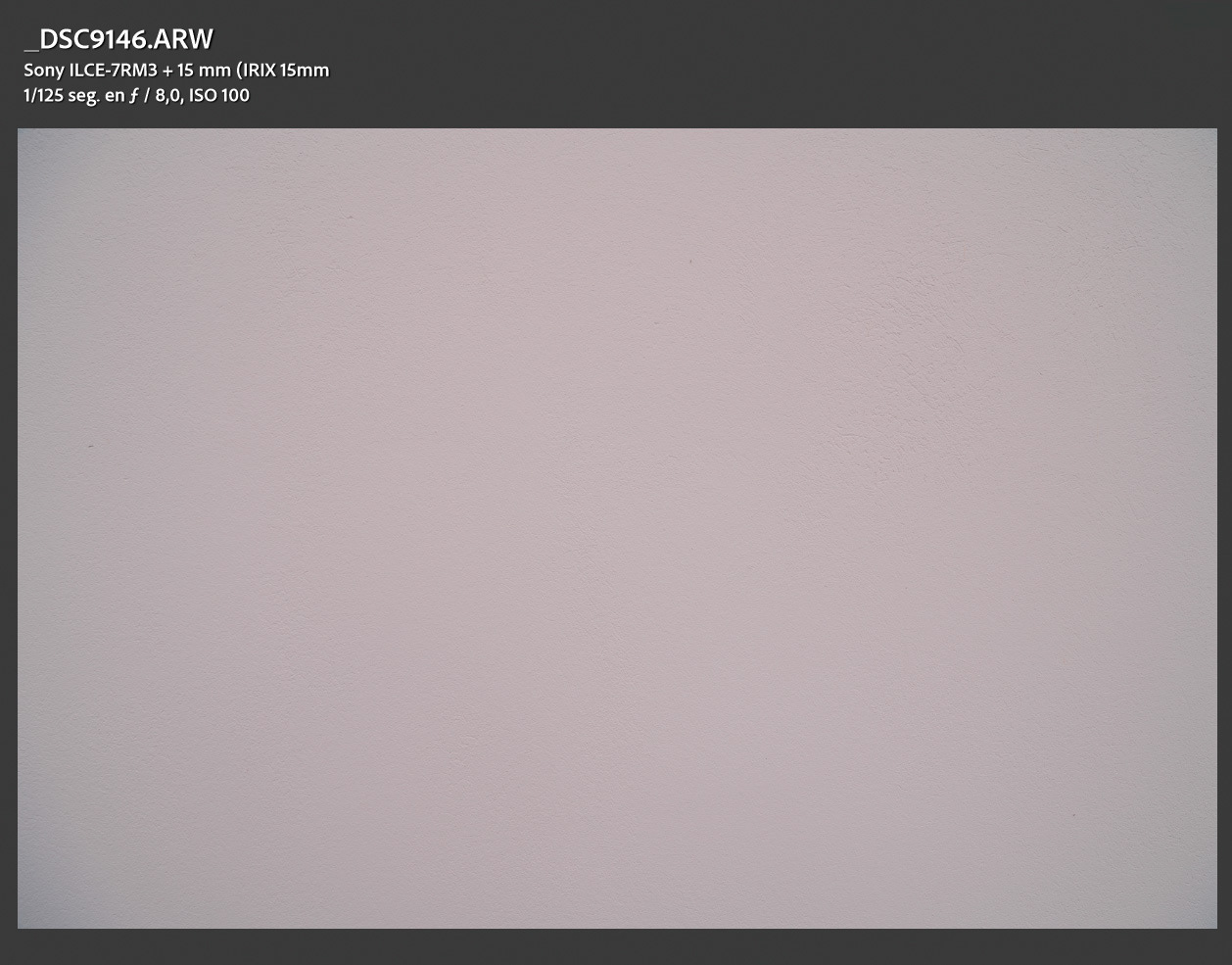
No profile correction
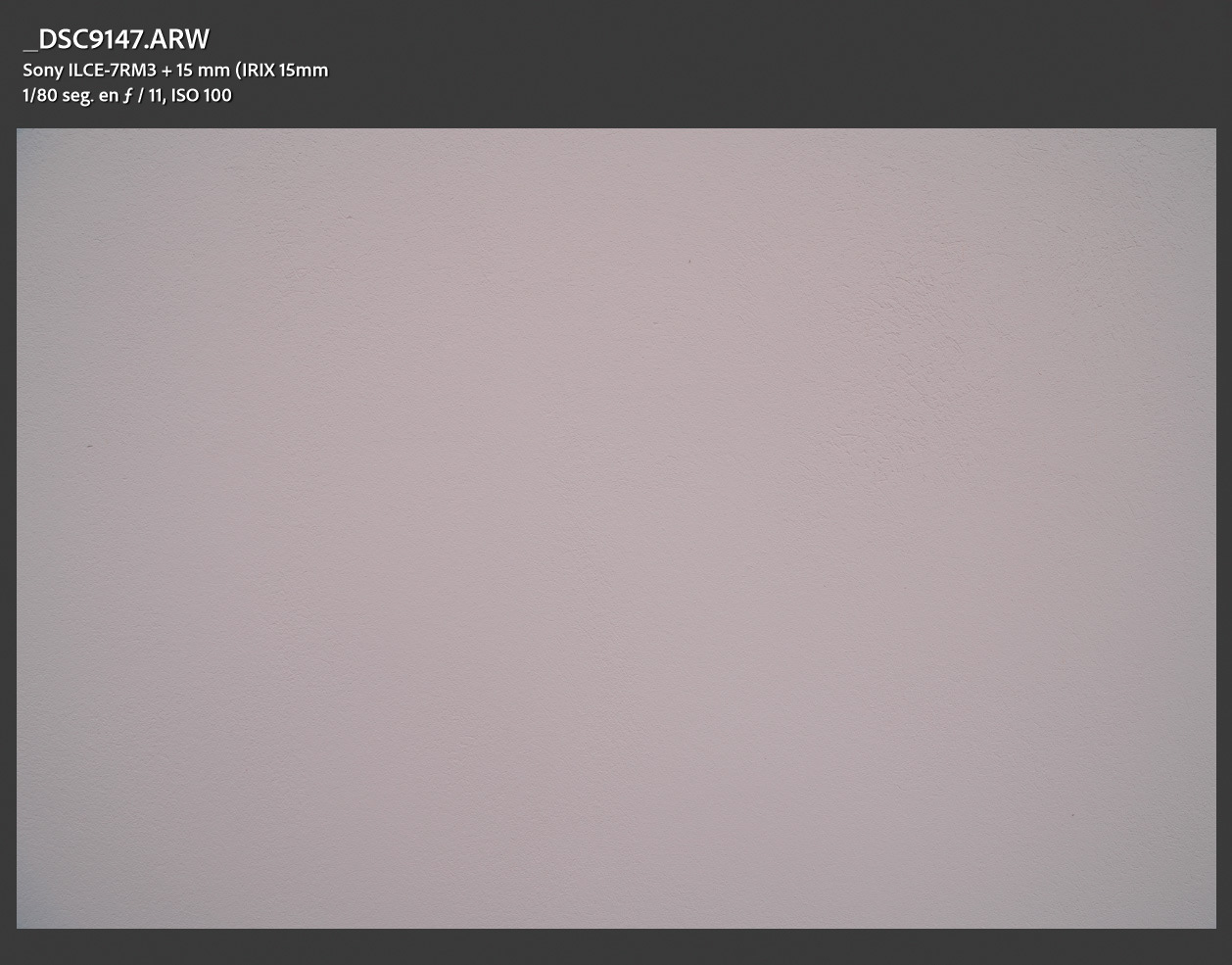
No profile correction

No profile correction
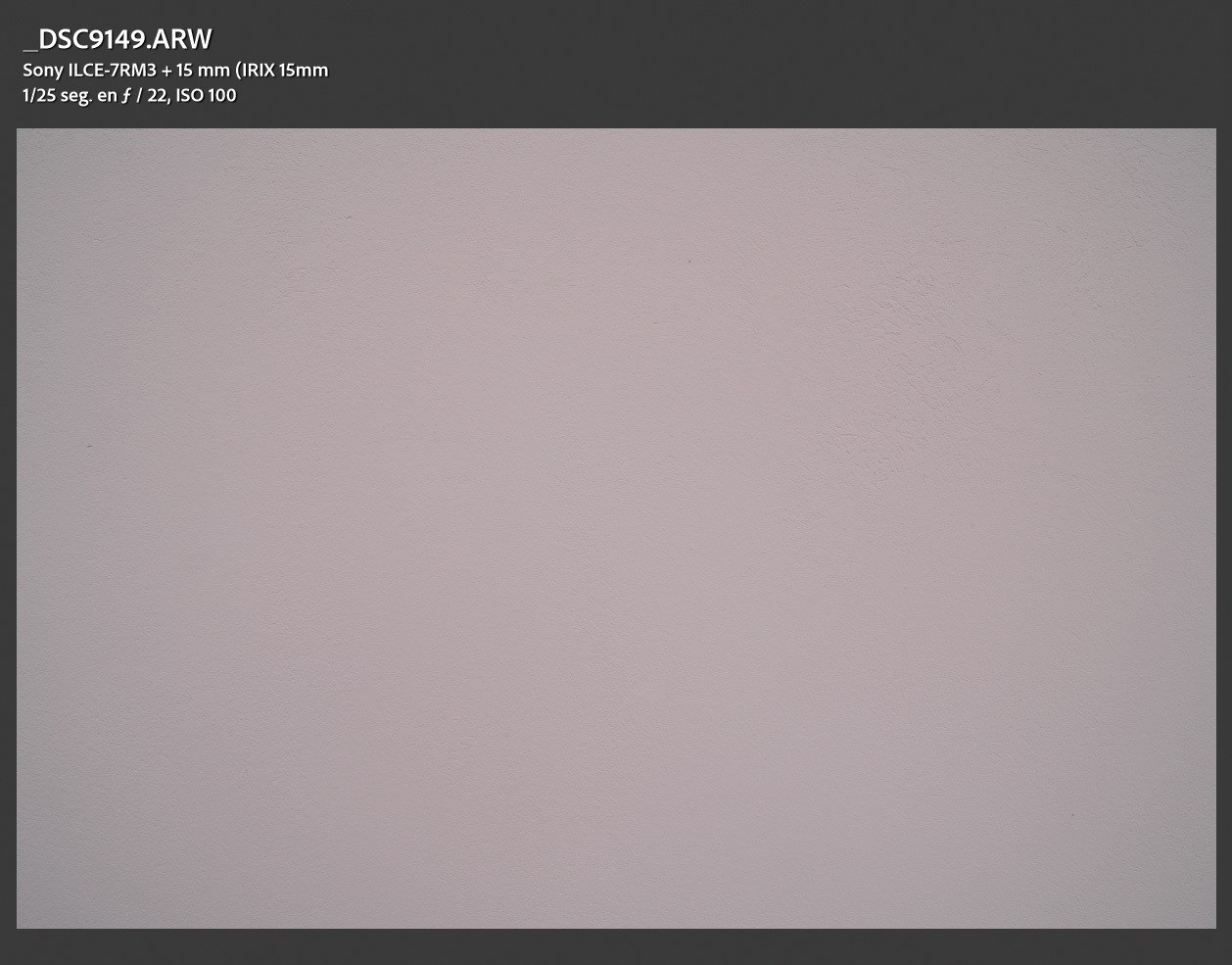
No profile correction
We analyze the results:
We see how the lens at maximum aperture (first photo of the grid taken at f2.4), has a slightly pronounced vignetting which disappears as we close the diaphragm, practically ceasing to exist at f5.6 and f8, and returning to appear very subtly from f11 (I recommend seeing the images in more detail by clicking on them to enlarge them and see the differences).
There is another detail that is observed in this unit that IRIX has lent me and that is, it seems that this vignetting is more visible in the lower corners of the images, but this may only happen in this unit, and it is not of relevant importance either.
On the other hand, it must be said that once the lens profile is applied in the editing program (in my case Adobe LR), this vignetting ceases to exist in any of the images, being completely corrected, as we can see in the 2 lower images that correspond to the apertures F2.4 and F2.8
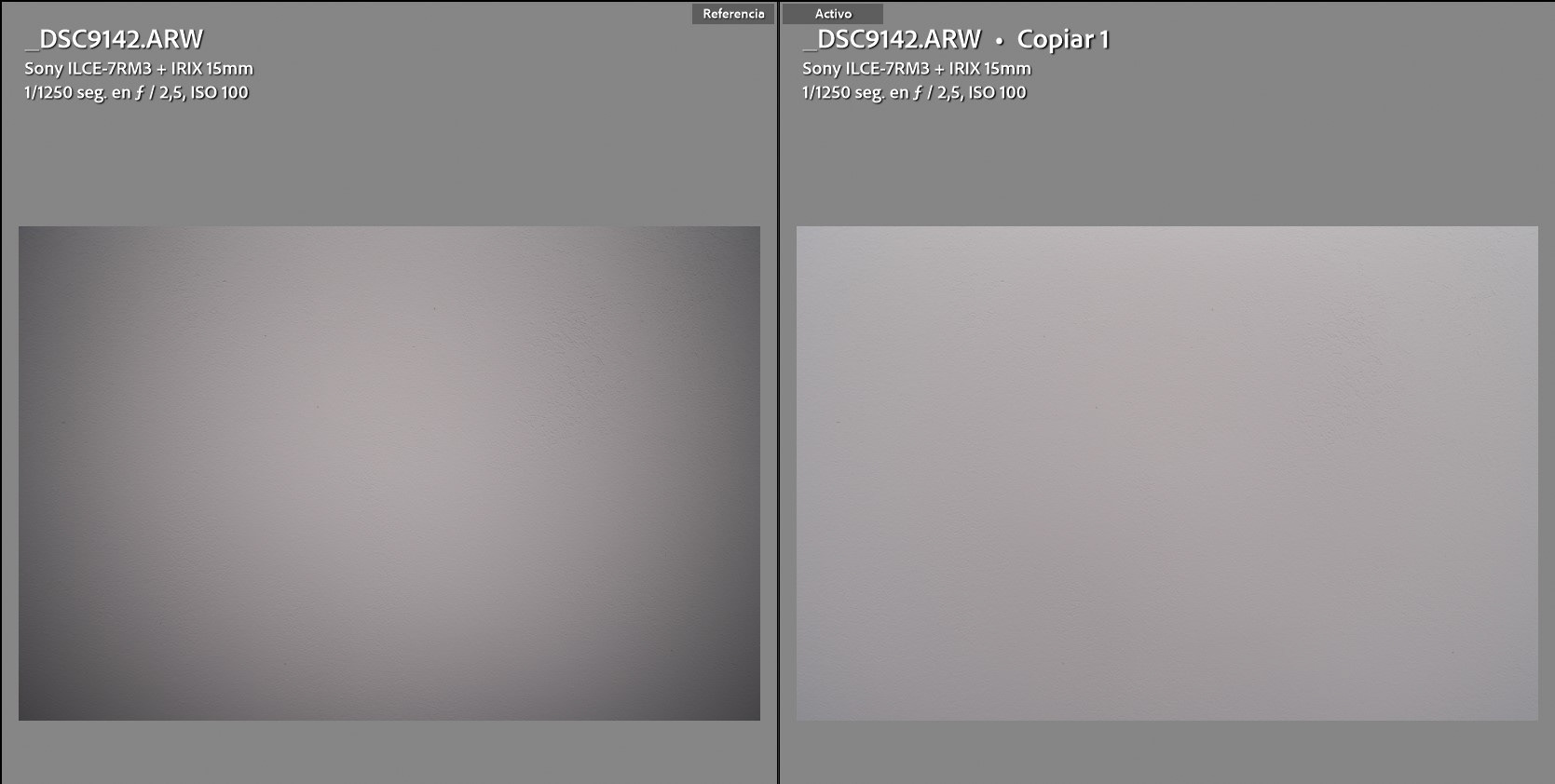
VIGNET CORRECTION F2.4

VIGNET CORRECTION F2.8
As for chromatic aberrations, I have been able to verify that this lens behaves excellently, having them very well controlled at maximum aperture (f2.4), and the few that have appeared in backlight situations are very easily corrected in editing both by applying the basic correction in the LR profile tab as well as using the eyedropper in the same tab but with manual correction.
Here you can see a couple of examples of how the lens behaves at two different apertures, f2.4 and f8.
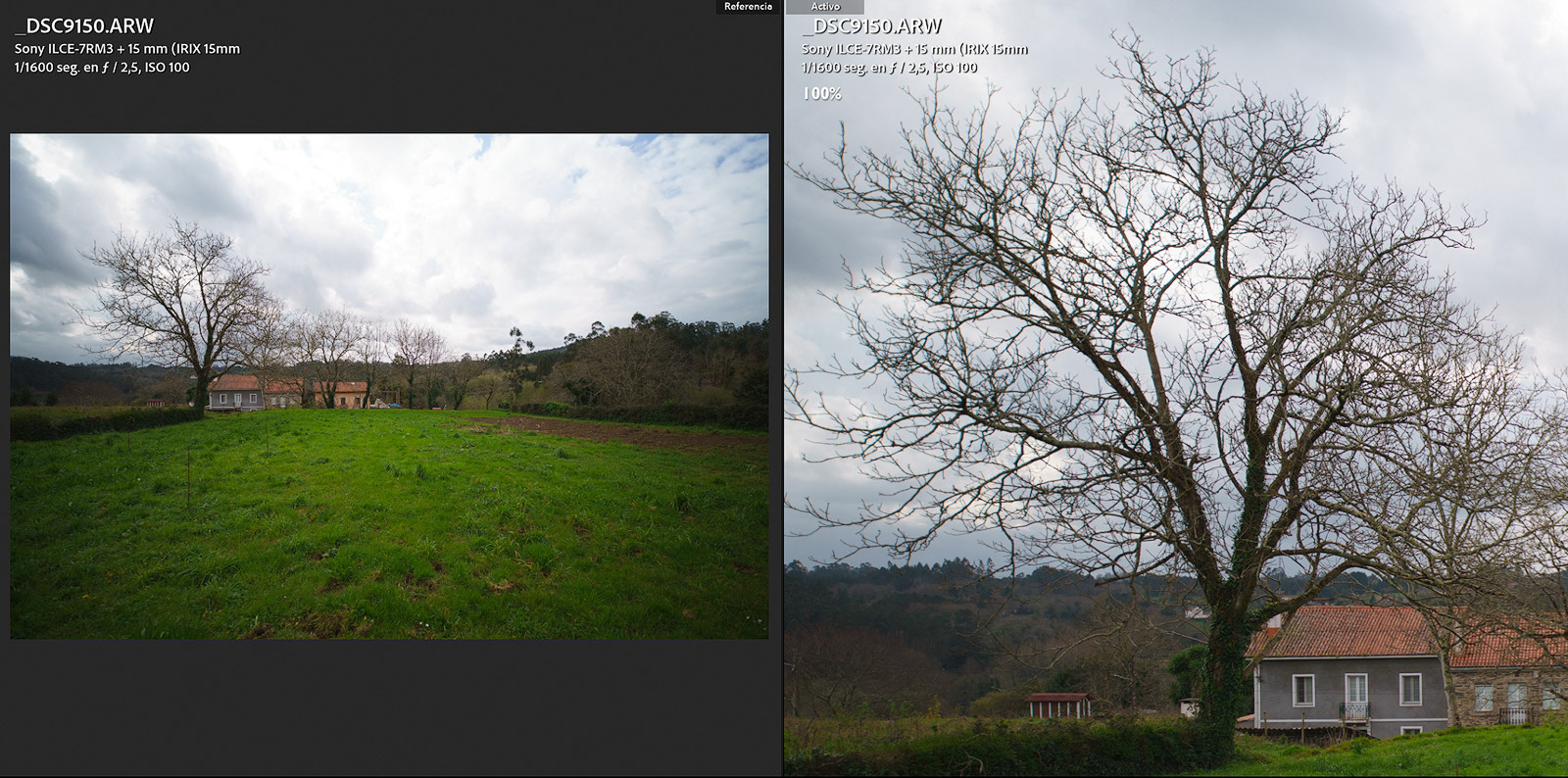
F2.4
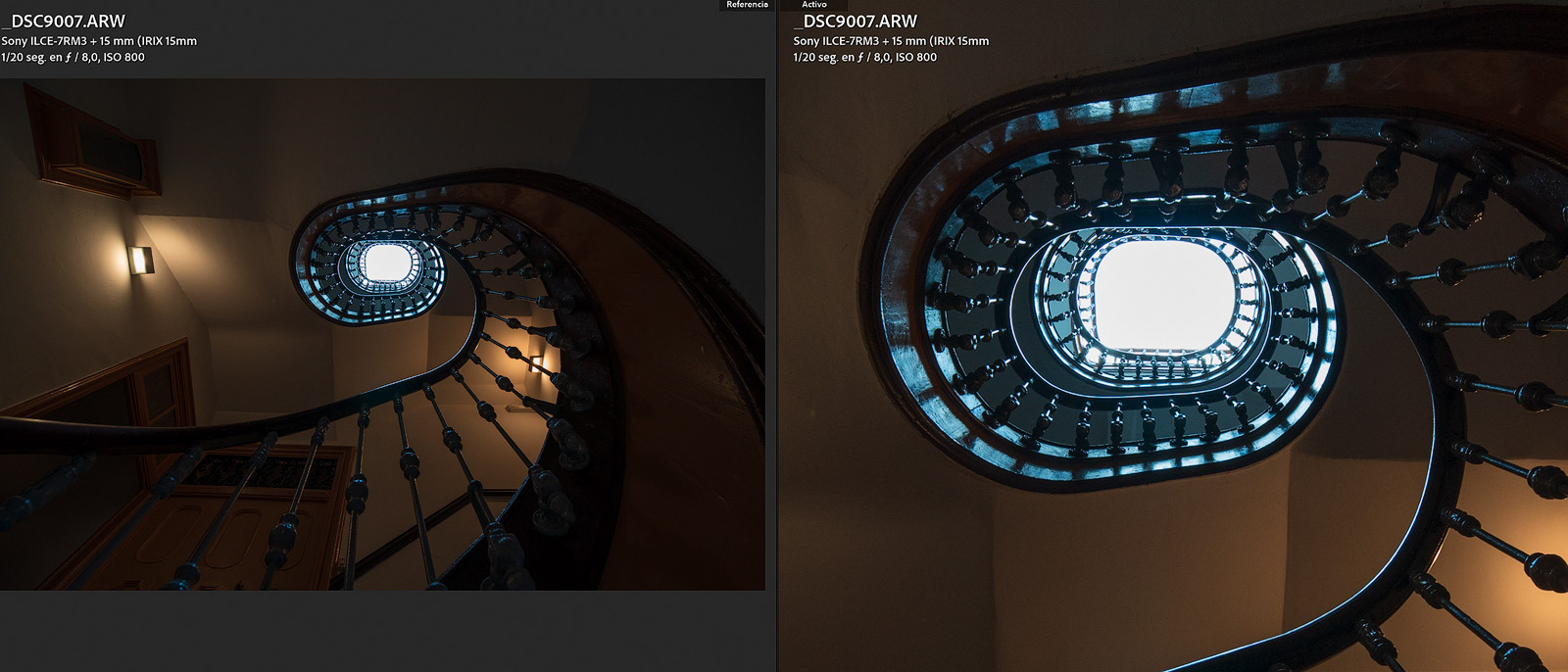
F8
COMA AND LENS ASTIGMATISM
To carry out this part of the test has been a little complicated given the time of year we are in and the geographical area, but I have finally been able to find a night where the clouds did not cover the entire sky, even so I must highlight, as you are going to see in the photos that the sky had a layer of whitish clouds that did not allow me to see the stars with the clarity that I would have liked.
Analyzing the images, we can see how in the corners this lens at its maximum f2.4 aperture, which is necessary for astrophotography, has a marked coma and astigmatism. It is true that in the center we can see the specific stars, but the corners are a little weak and especially if you are a very demanding photographer and you are looking for sharpness and complete perfection in a lens. Even so, it is a lens to take into account if you want to get started in the world of night photography as well as if you are already a slightly more advanced photographer.
Full photo
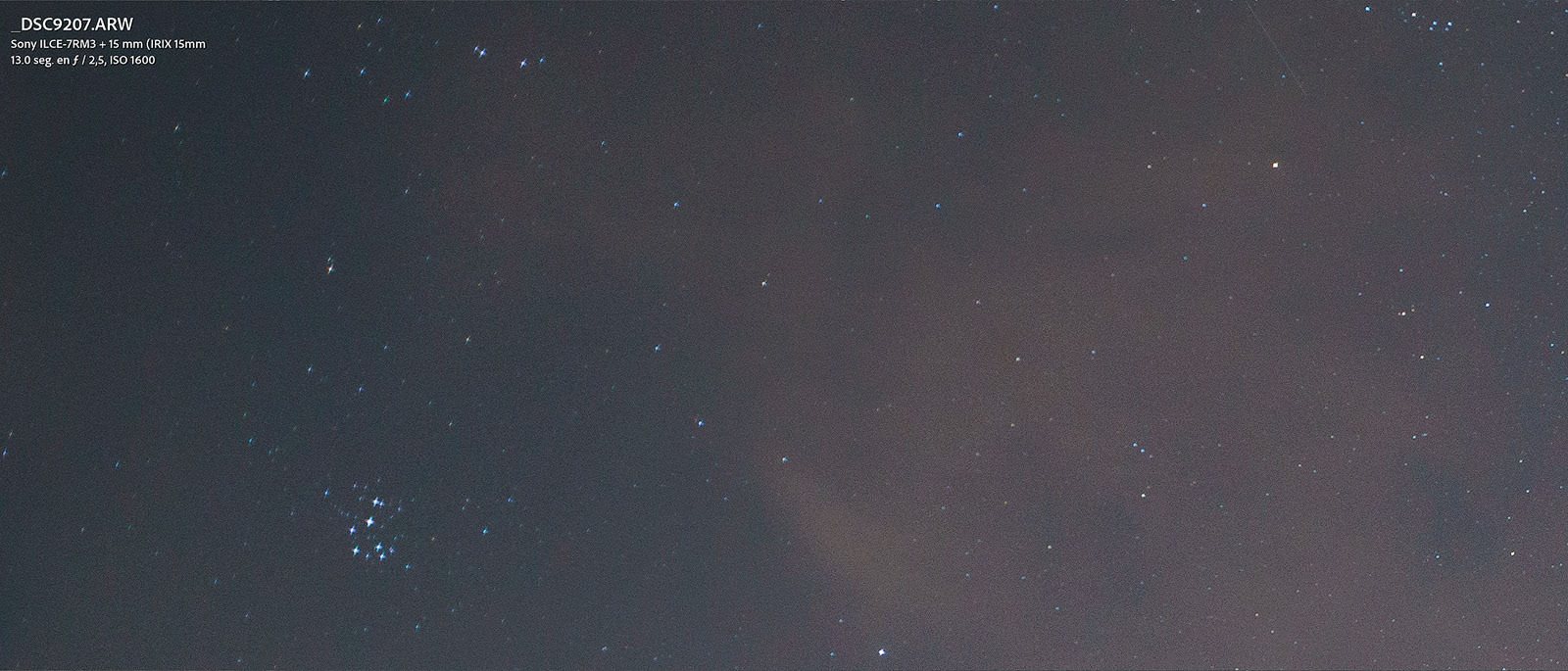
Photo corner
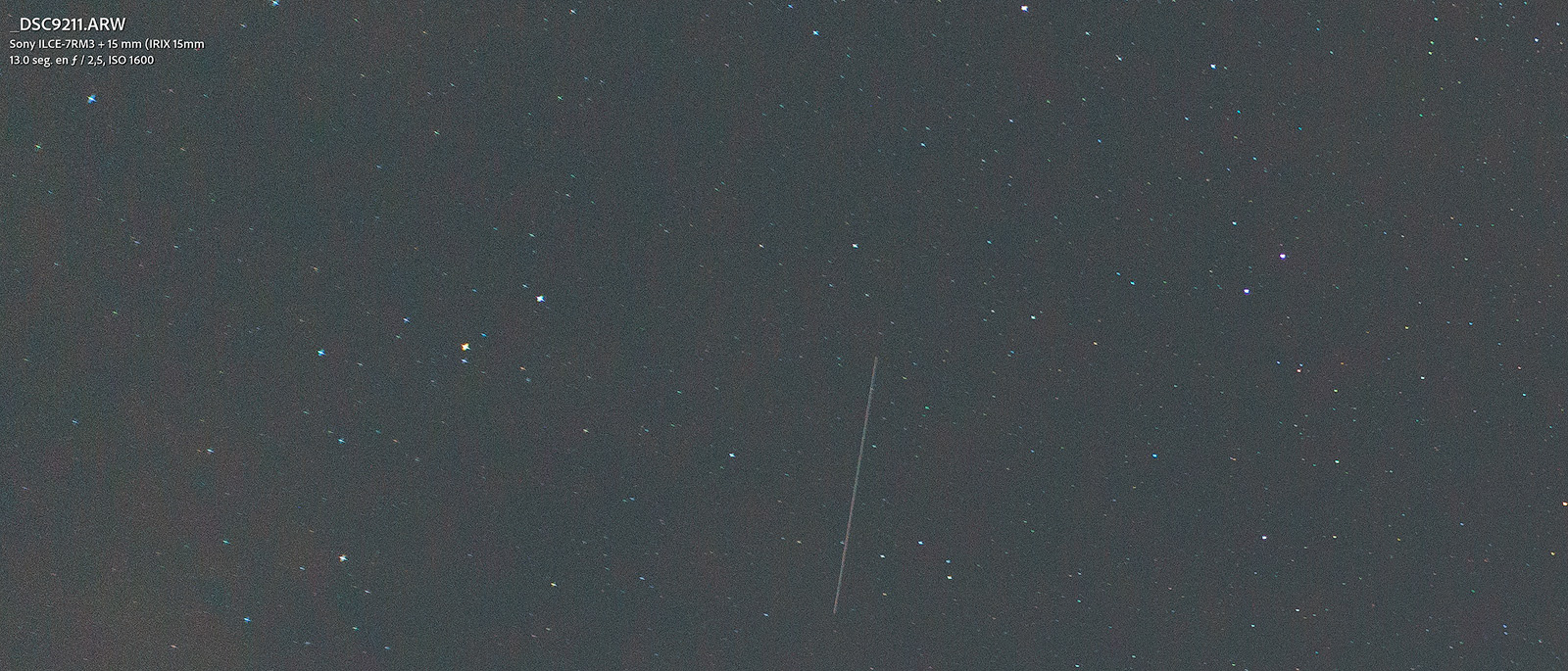
Photo corner
Center of the image, The stars appear punctual.
SUNSTAR AND FLARES RESISTANCE
And here, in my opinion, we reach the weakest point of this lens.
For landscape and cityscape photographers, a very important point in a lens is how the sunstar is generated. The lens we are analyzing is built by diaphragm blades with 9 rounded leaves, so when it comes to generating said sunstar it will double the number of solar rays and in addition, the fact that they are rounded will greatly determine the type of star (those that are less rounded always work better).
Surely most of you know how a sunstar is generated, but even so, I am going to make a small reminder. The first thing we have to do to capture a solar star is to close the diaphragm of our lens to the smallest possible aperture (f11, f16 or f22), although I would never use an aperture at f22 because the loss of sharpness in the image will be huge due to the effect of diffraction. In addition to closing our diaphragm, we must try to place the sun at some strategic point, such as when it is setting over the horizon, or behind a rock or tree. This, together with the closed diaphragm, will generate our solar star. Although these solar stars cannot only be obtained in the sun, we will also obtain them with the light of street lamps or any other artificial light source and in places where the sun is reflected, such as water (see the example below) or on something metallic.
That said, let's get to the analysis:
As I already mentioned at the beginning of this section, the sunstar of the IRIX 15mm 2.4 lens is not its strong suit. Due to its 9 leaves we will obtain twice as many sun rays, that is, 18 star points, and also the blades are rounded so the sunstar will not be well defined until we close the diaphragm to the minimum opening and still, it is not completely perfect.
As you can see in the first image, at an aperture of f2.4 no type of star would be generated, we have to close down to f11 or f16 to get it. In the rest of the images we see examples of different apertures and different situations.

Sunstar at f2.4 and f16
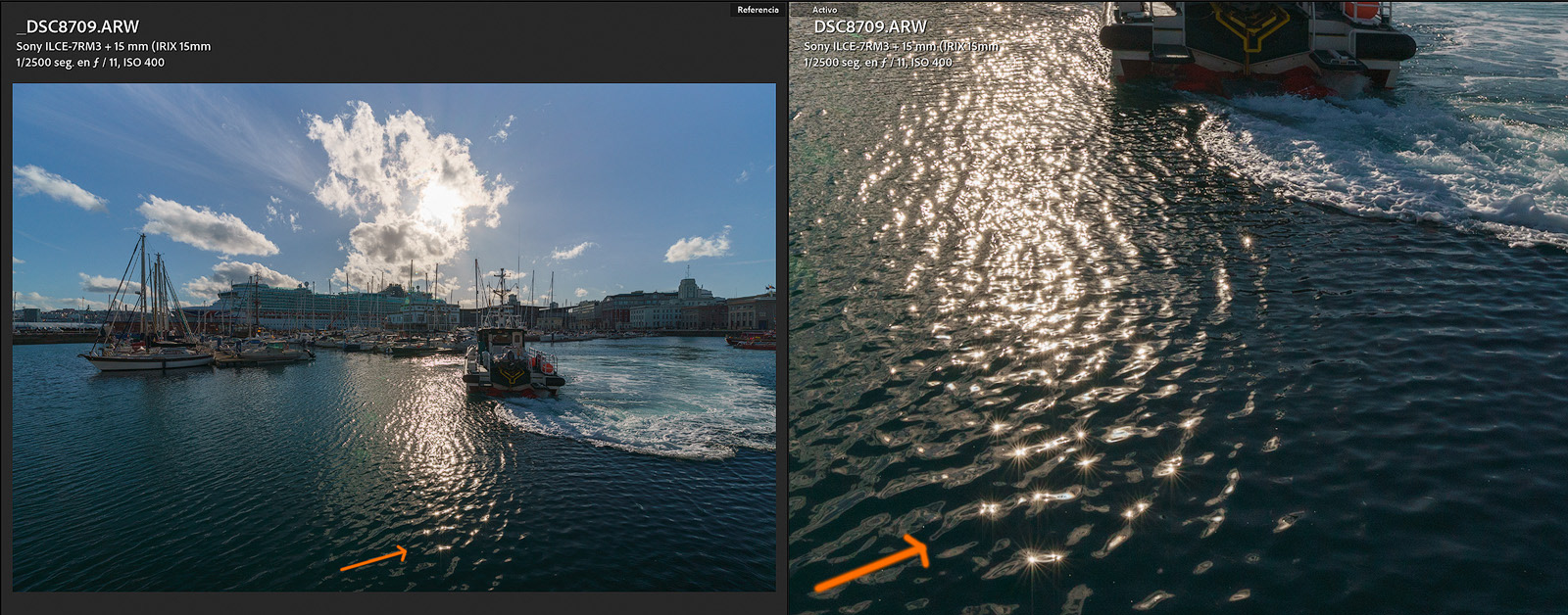
Sunstars in the water reflection at f11
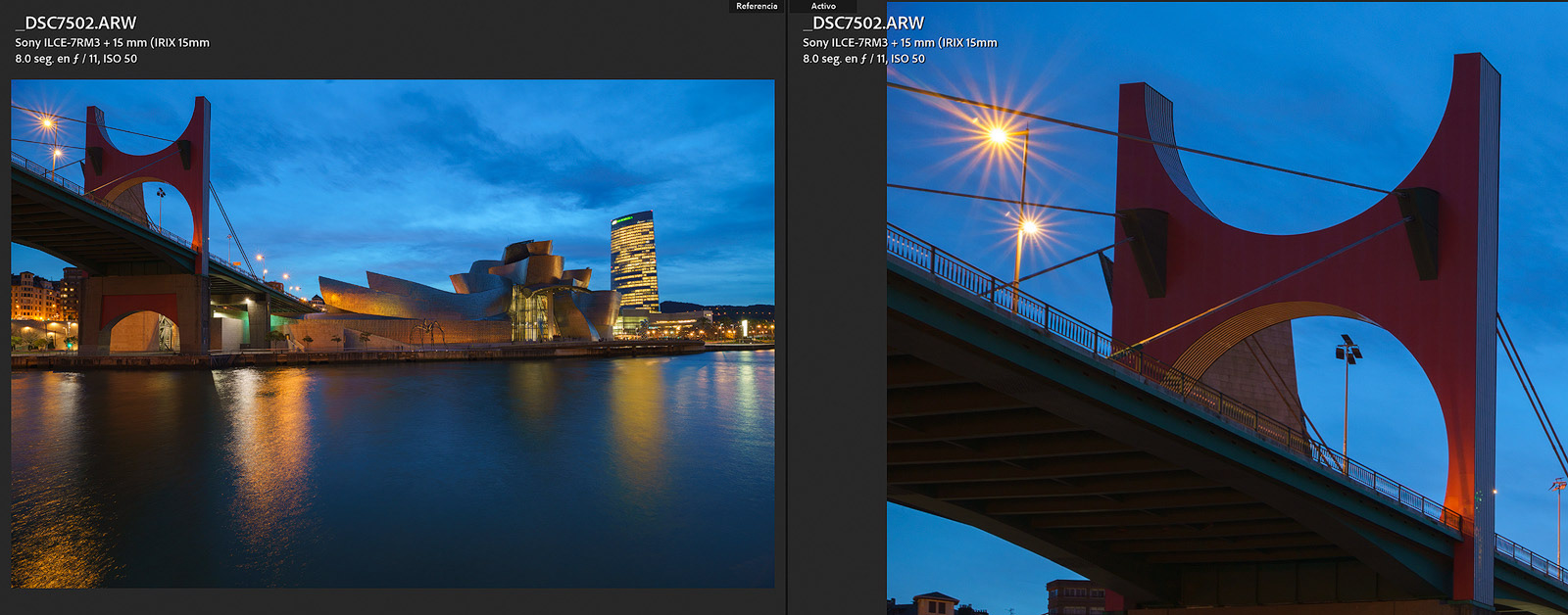
Sunstar a f11
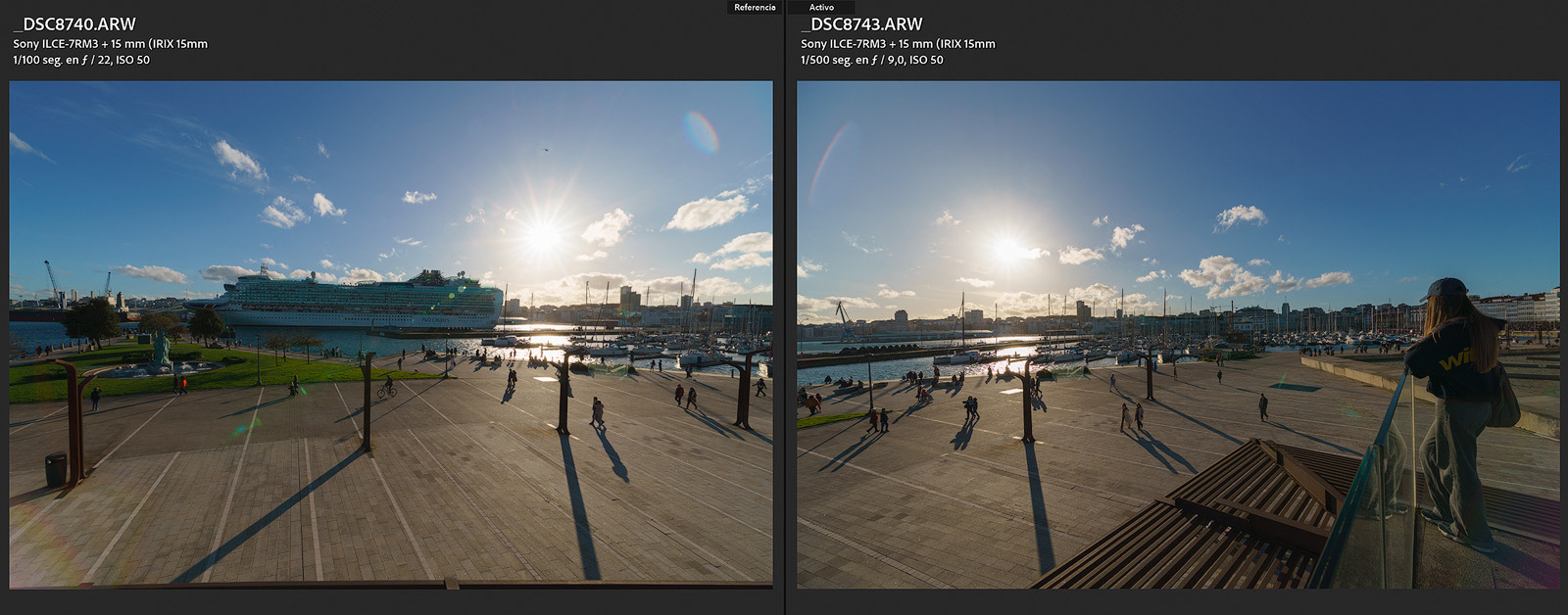
Sunstars a f22 y f9
As for resistance to flares, it can already be seen in the previous photos that it is not another of its strenghts, we must be very careful so that the sun or any beam of light, both lateral and frontal, does not affect us sneak into our composition and spoil our photo and it doesn't matter what aperture we have the lens at, they are evident at all apertures depending on the angle at which the light falls.
All of this, I understand, happens due to the design of the lens, which has a curvature similar to that of a fisheye and that it must be that way to achieve that wide aperture that it gives us.
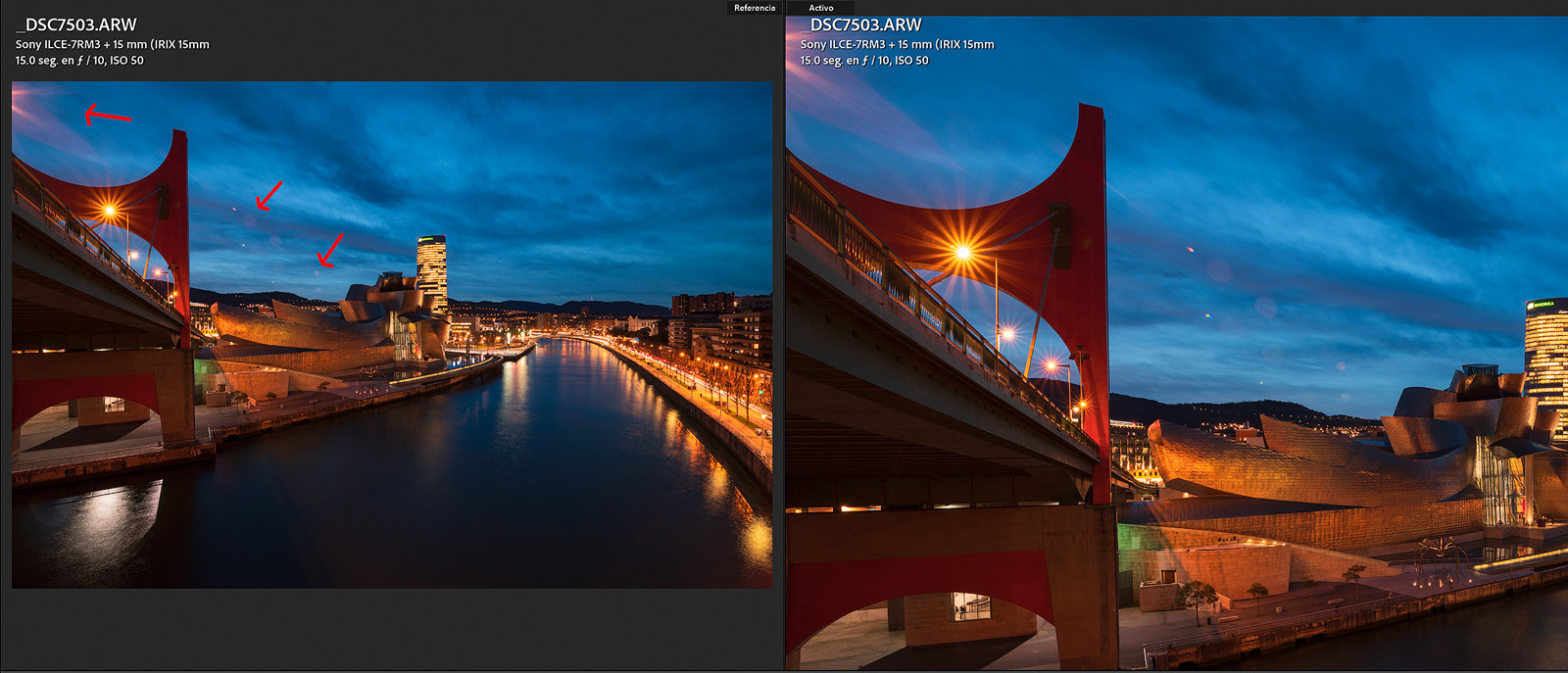

CONCLUSION
My final conclusion is that the IRIX 15mm f2.4 is a very good option within its range, both in price and quality, with great sharpness and very low distortion as promised, which makes it ideal for landscape and architecture. It can also be used in night photography due to its luminosity, but we have already seen that it has some astigmatism and coma, although it is still valid for this purpose, however perhaps not for the most demanding photographers.
PROS
Good sharpness
Minimum distortion
It has contacts to transmit Exif and control the diaphragm from the camera
Sealed lens
You can put screw-in filters
Focus lock possible
CONS
Size and weight
Too obvious flares
Sunstar not too defined

